site search
online catalog
MASSACHUSETTS MEDAL OF HONOR RECIPIENT’S OFFICER’S UNIFORM COAT DRESSED OUT FOR MOURNING LINCOLN, WITH HIS MOURNING COCKADE, VEST, COMMISSIONS, LEDGERS, AND NOTES
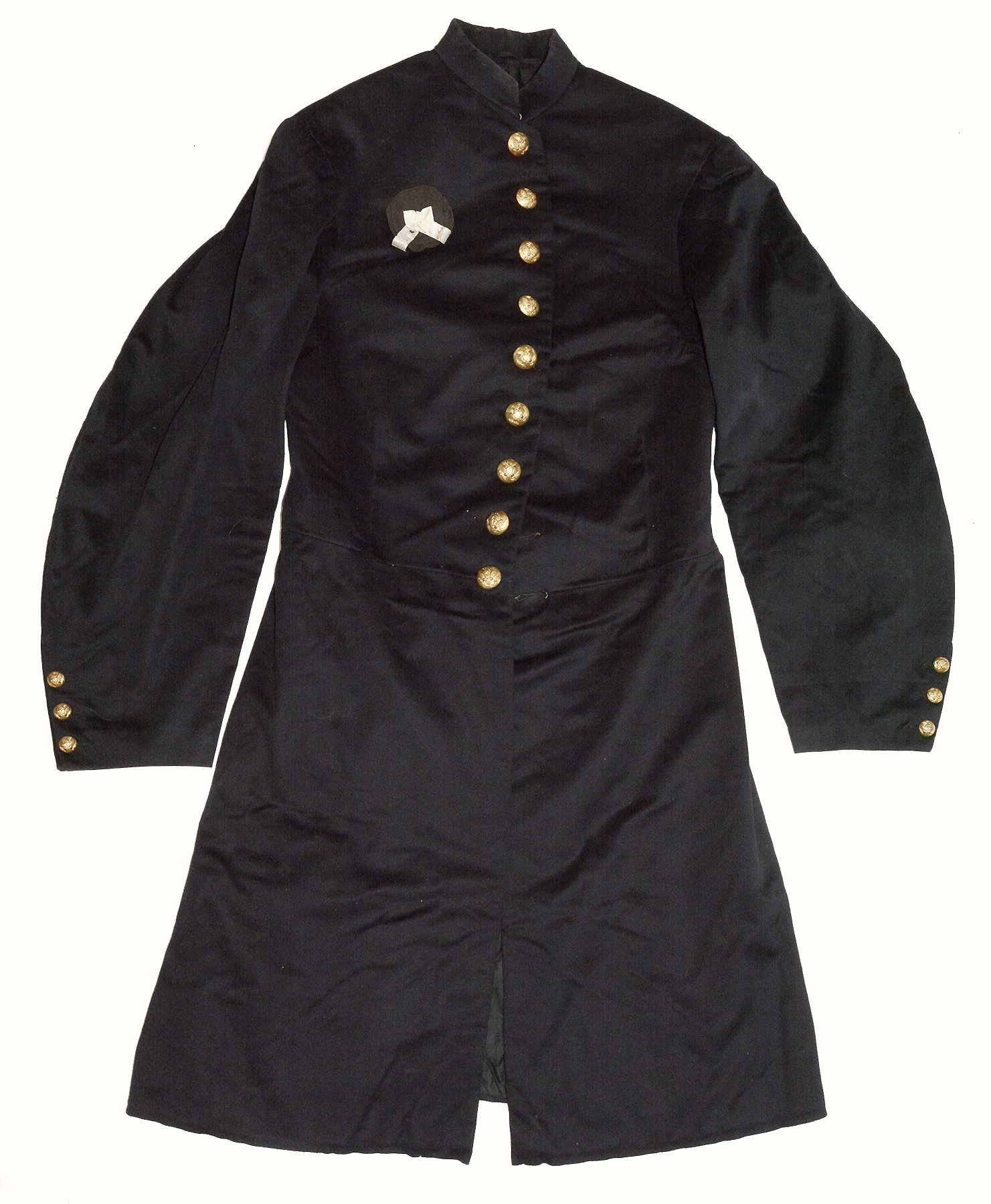
Hover to zoom

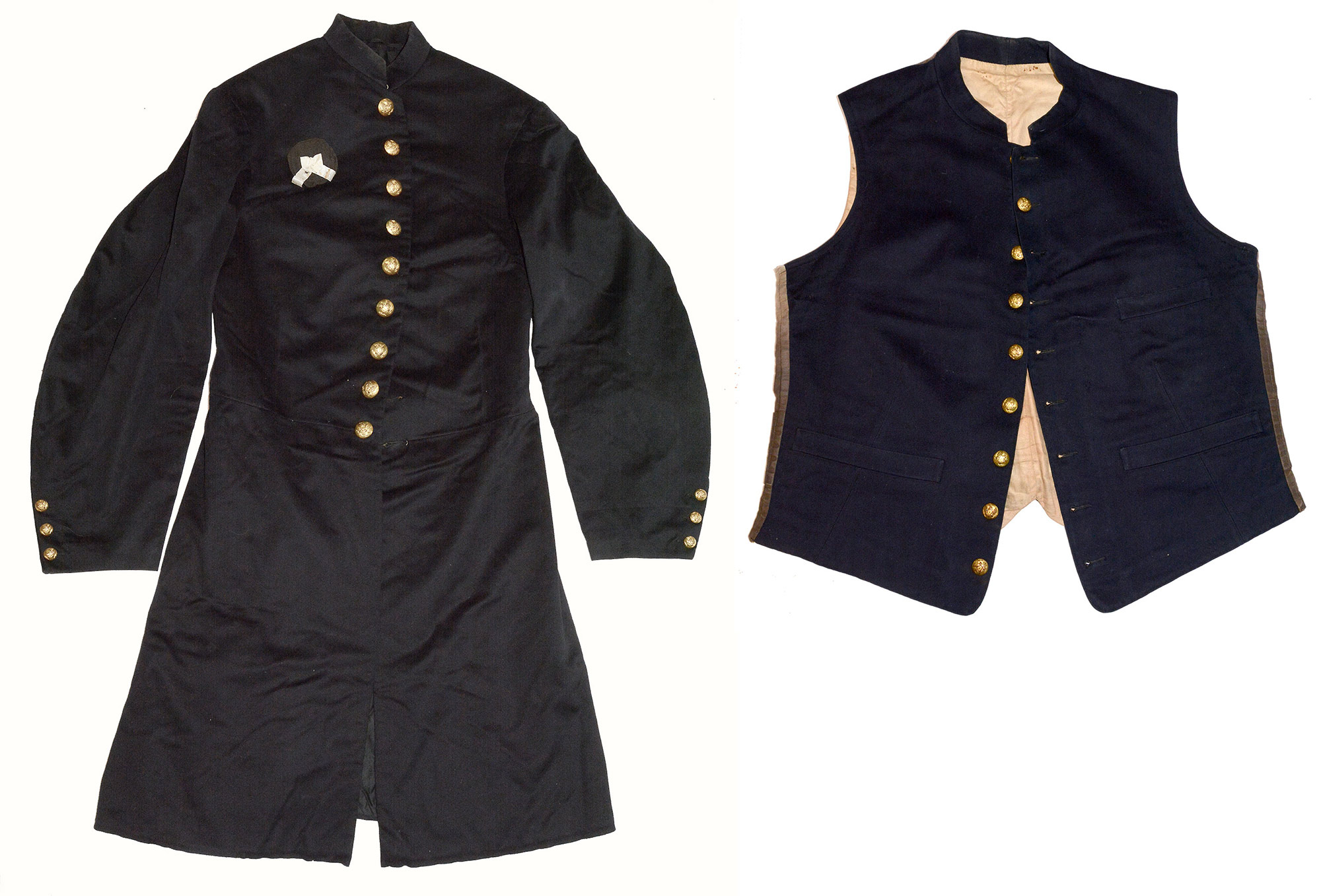
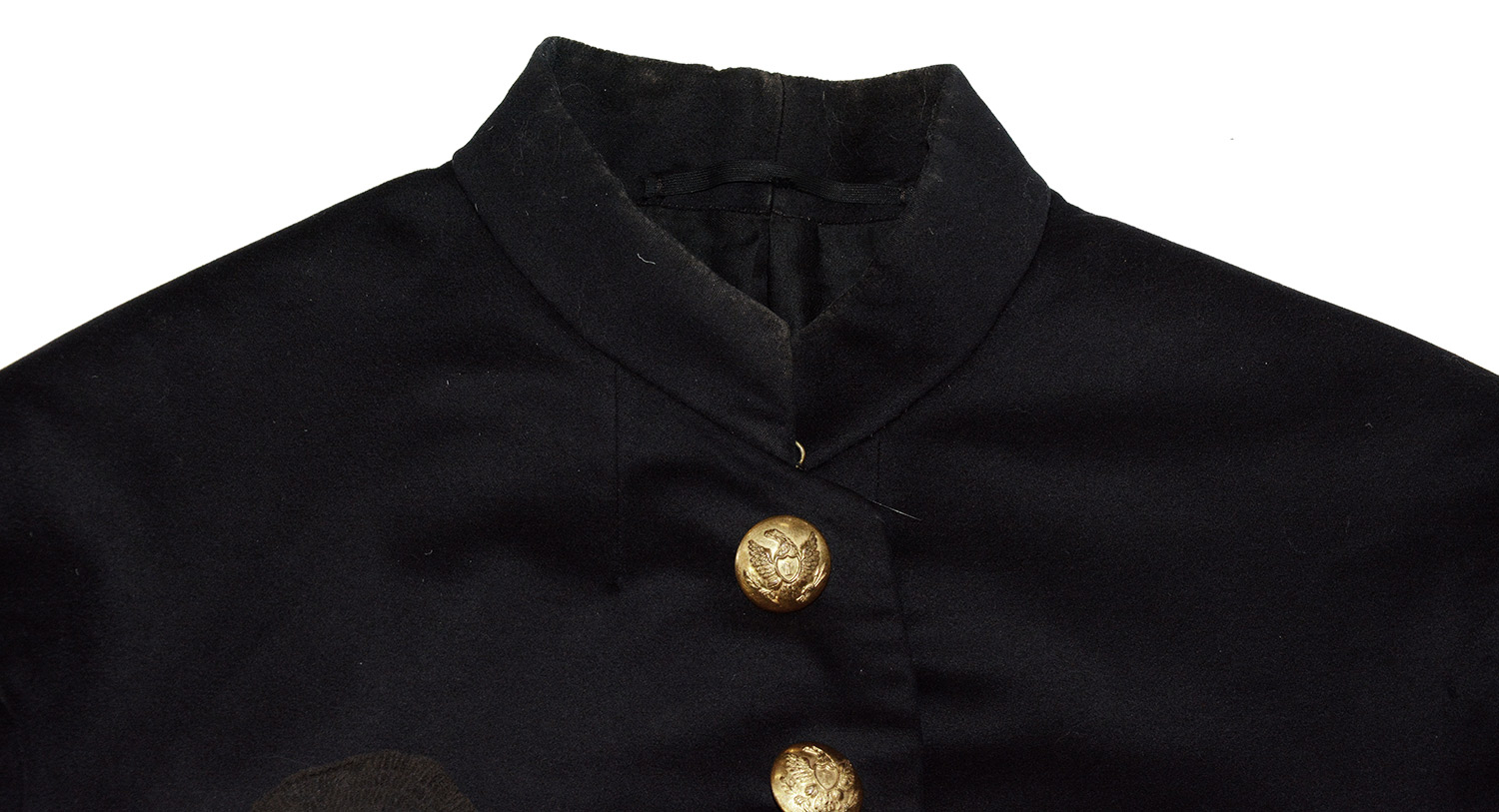
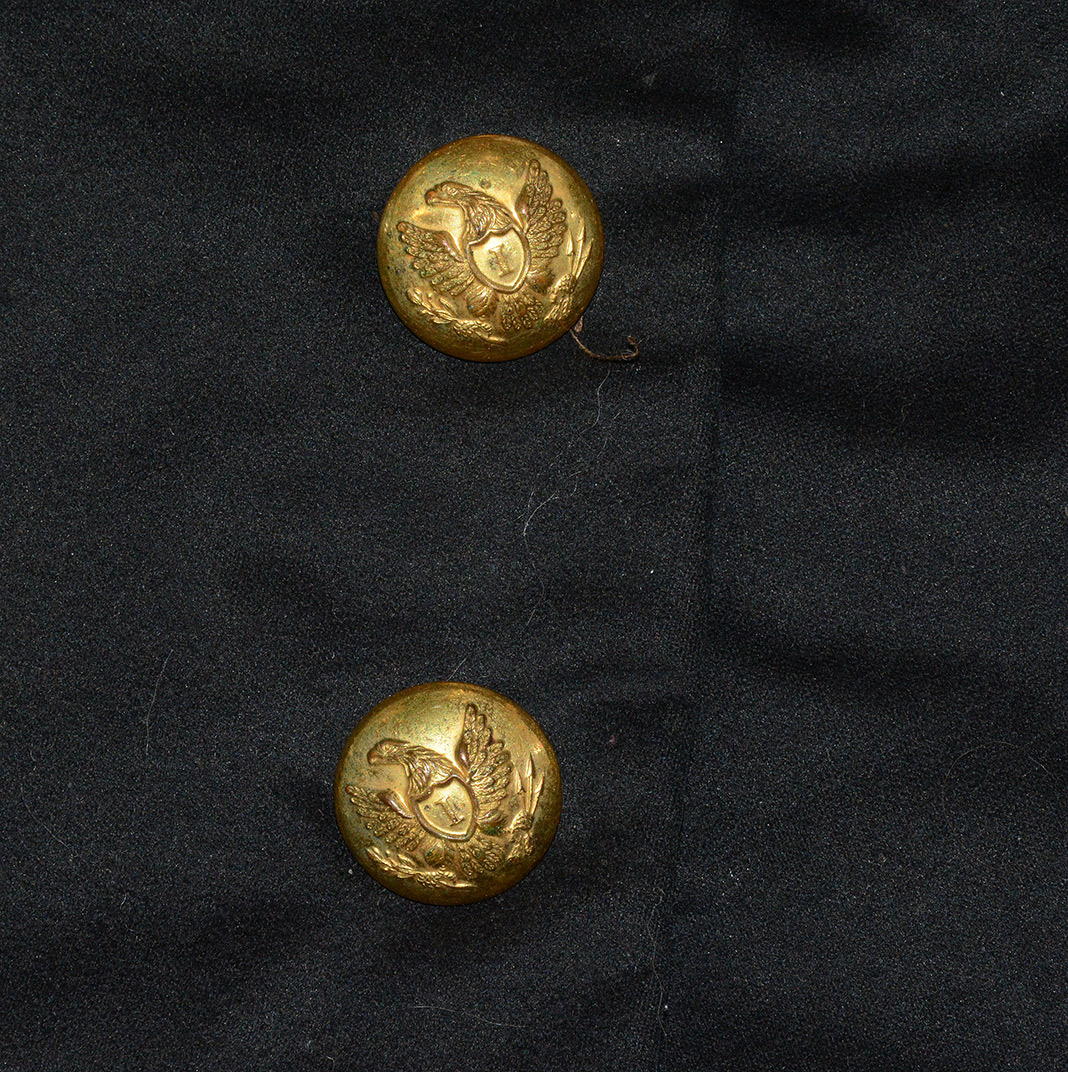
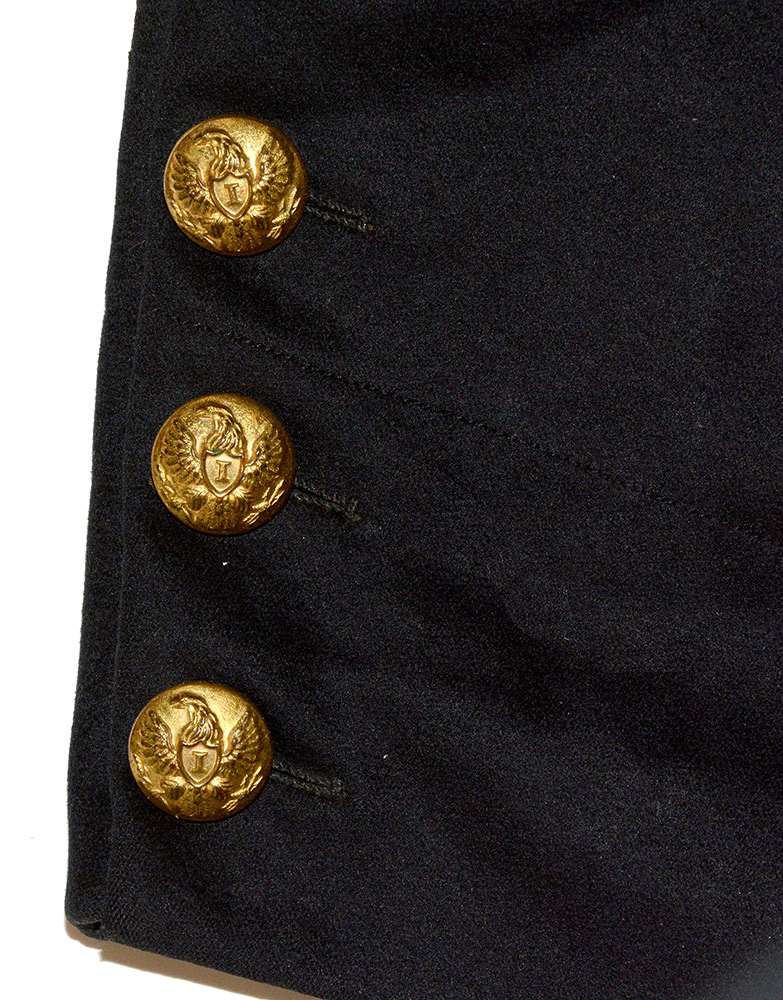
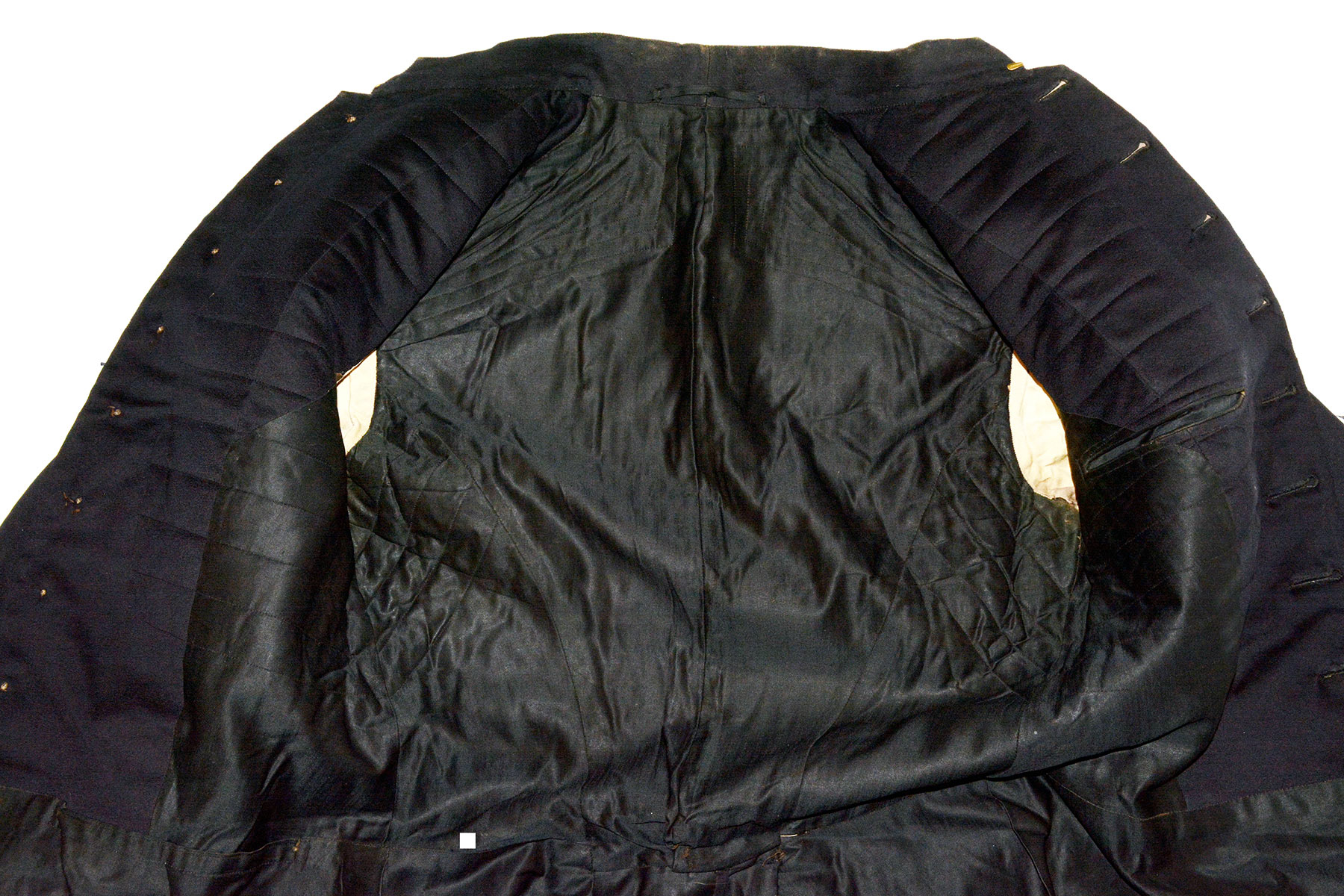
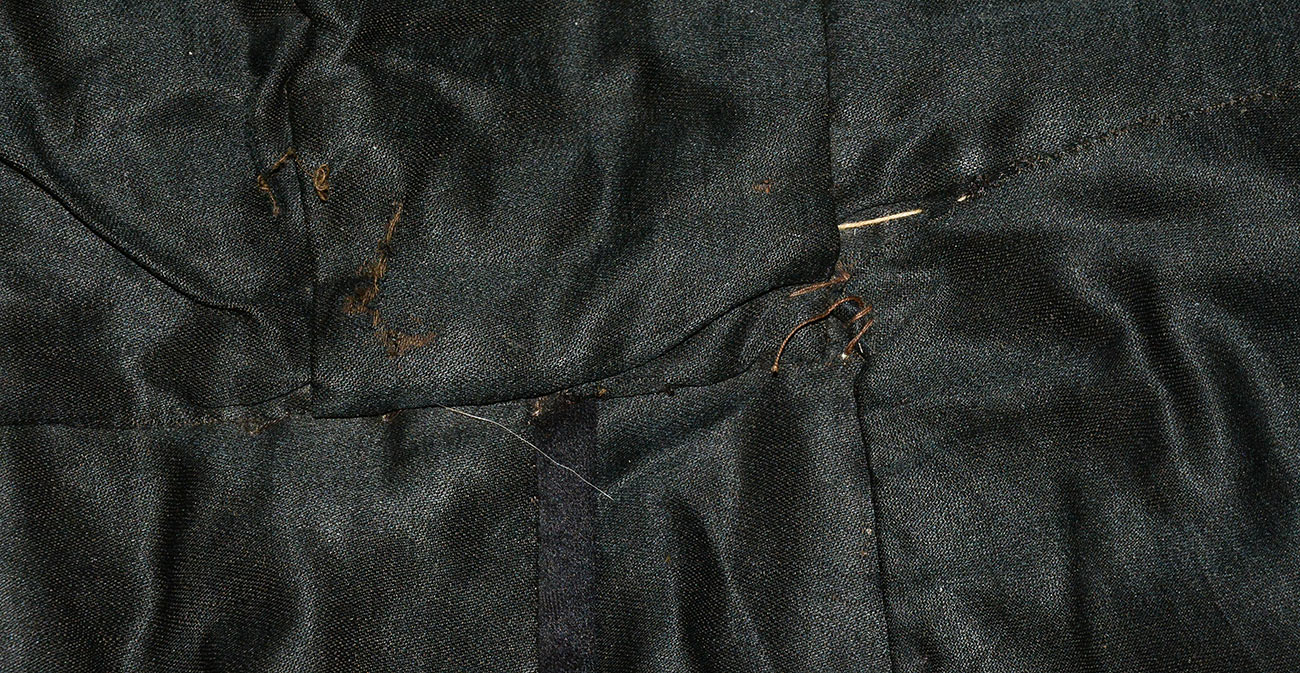
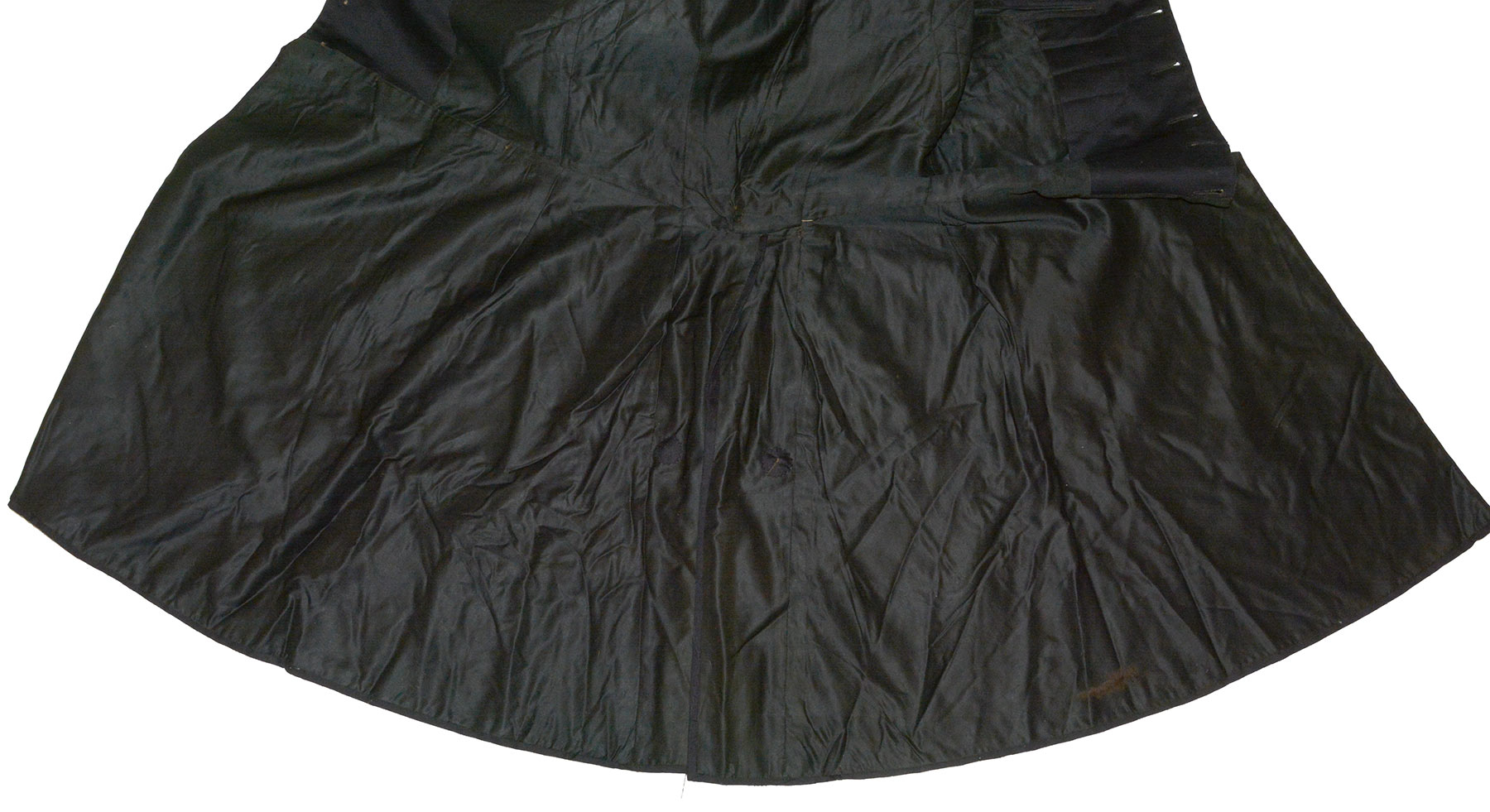
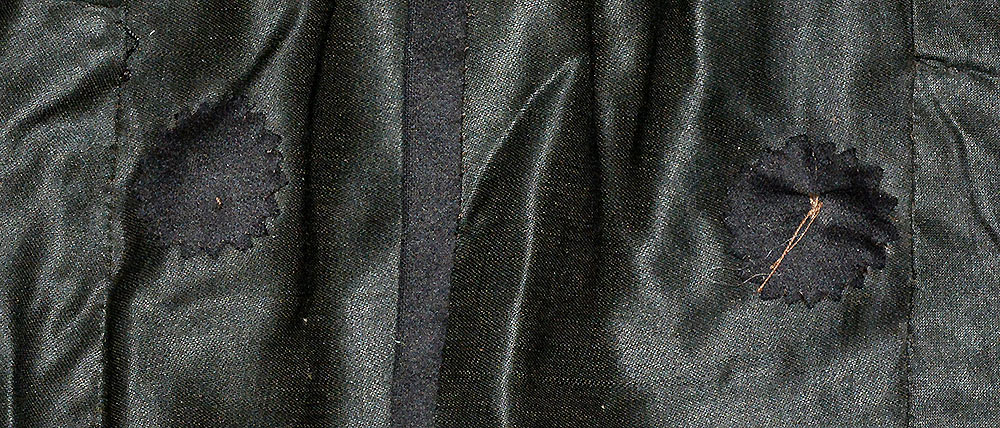
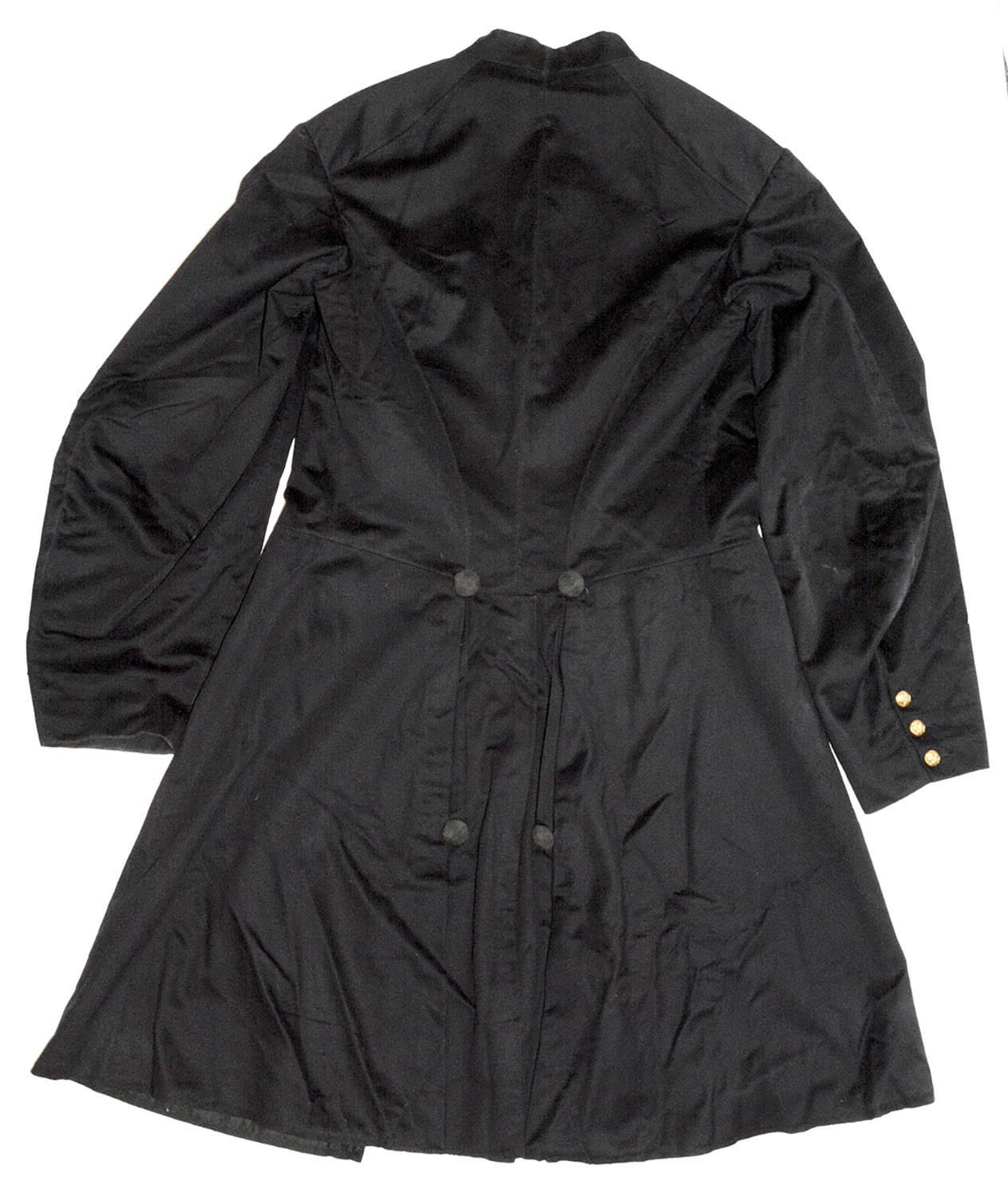
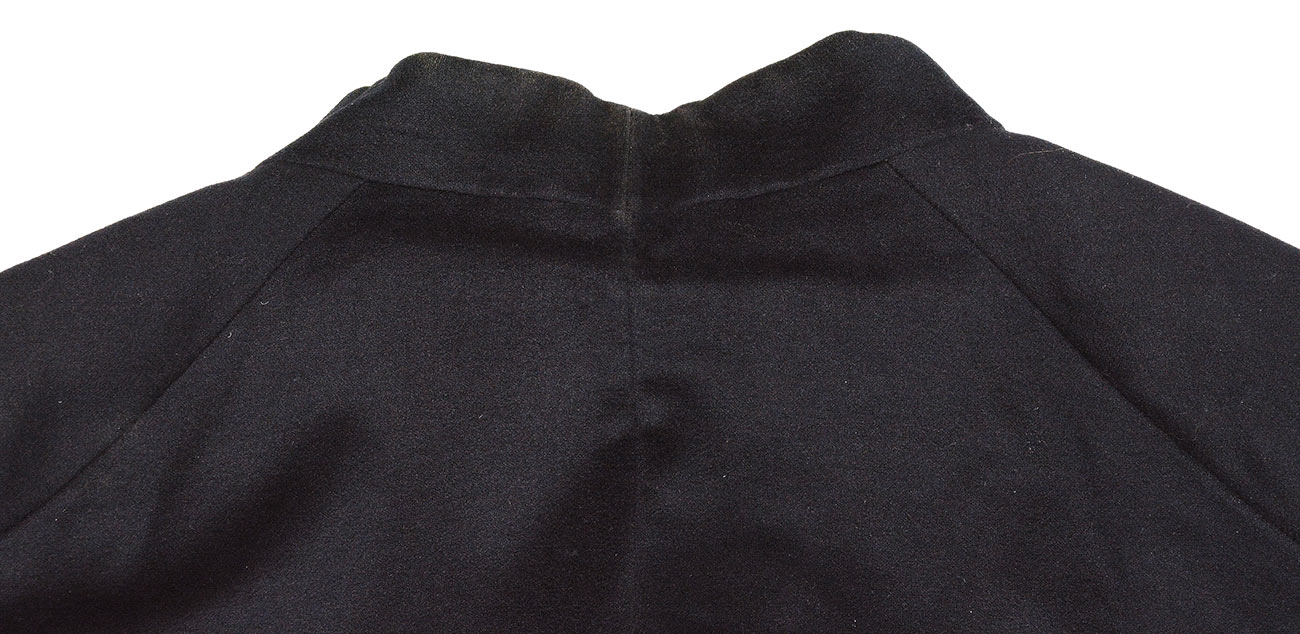
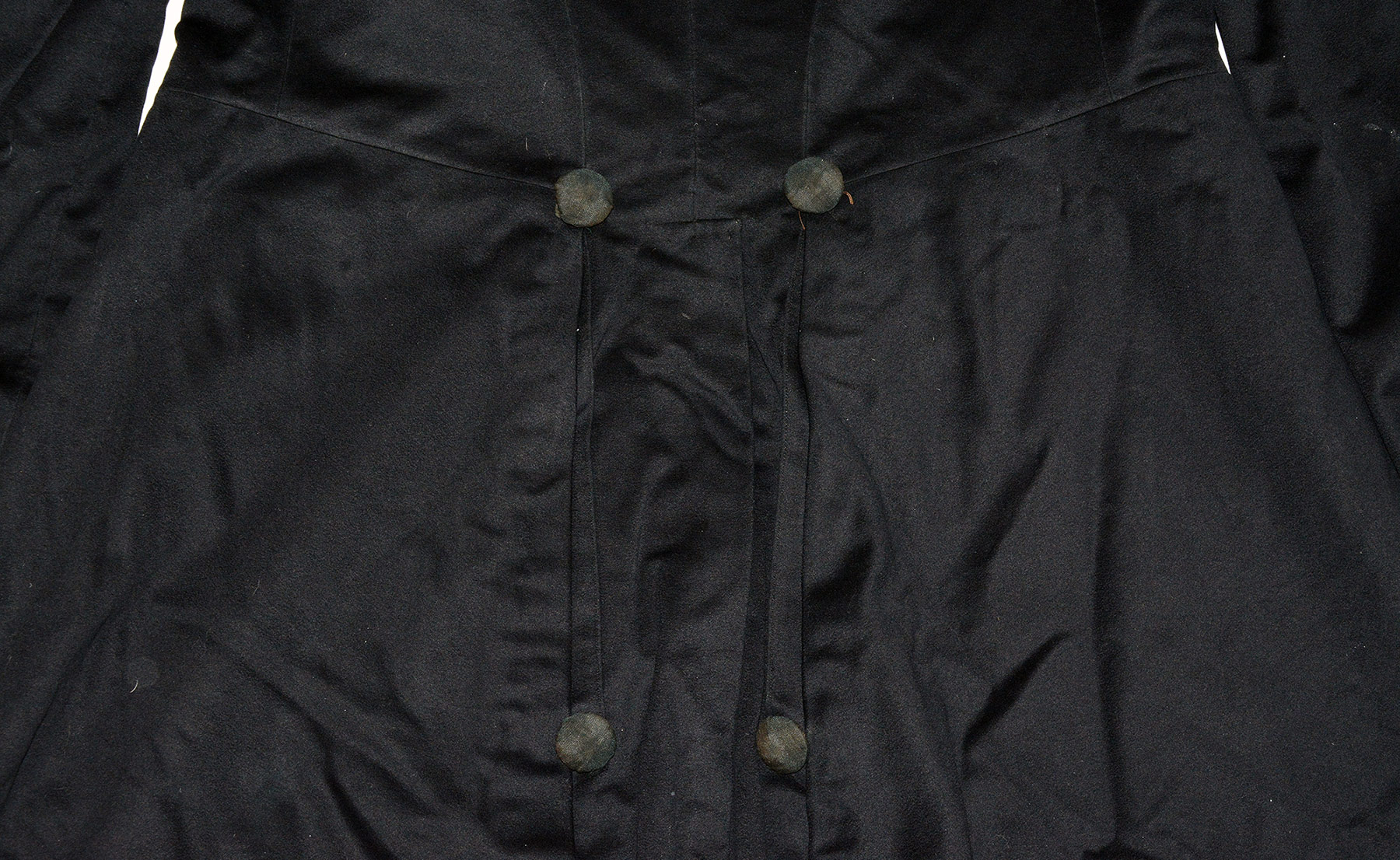
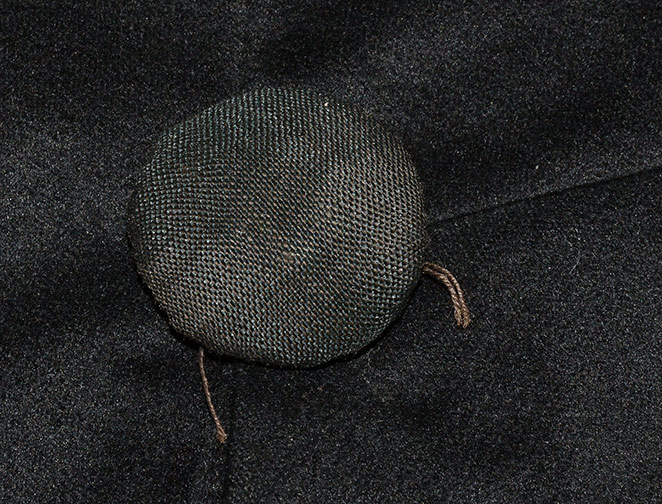
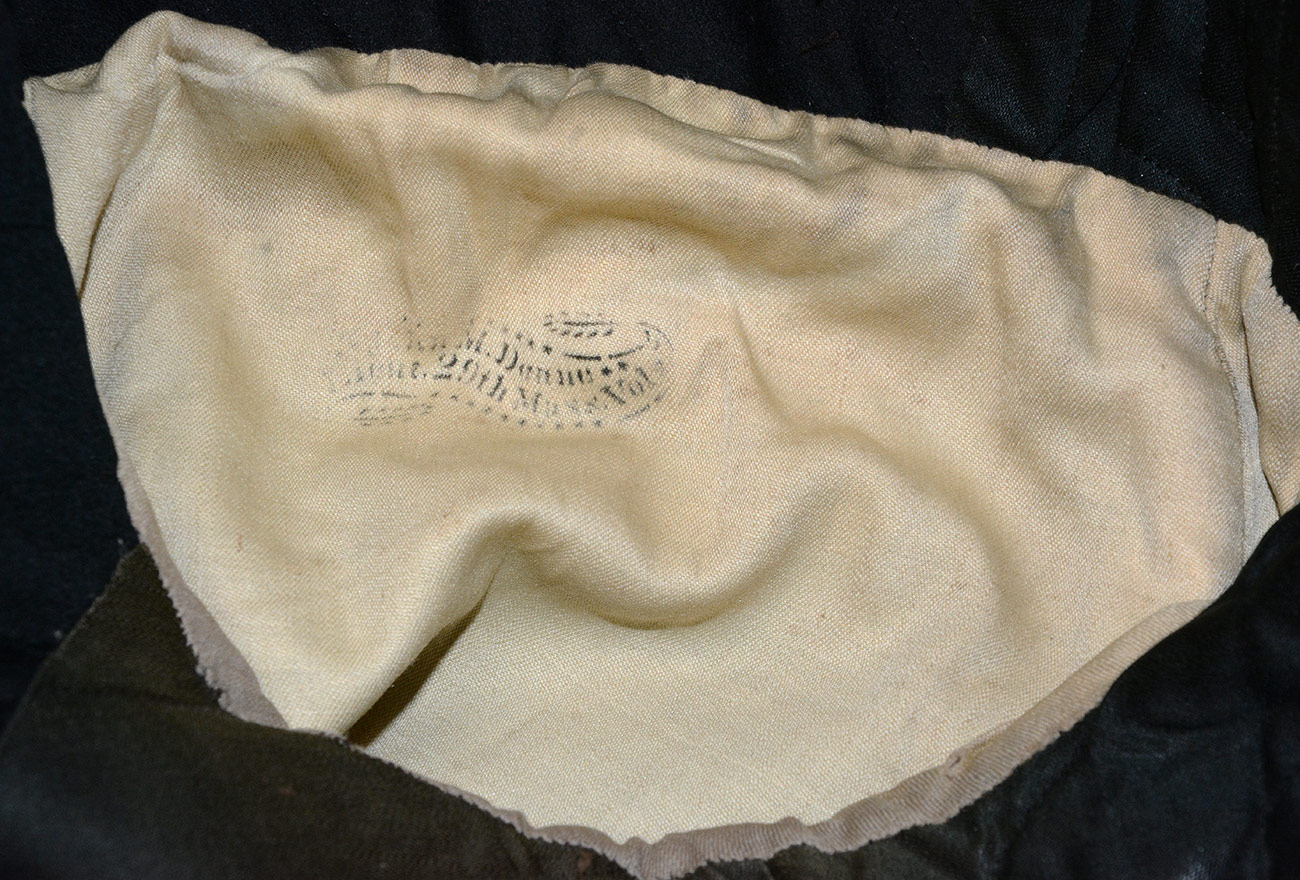
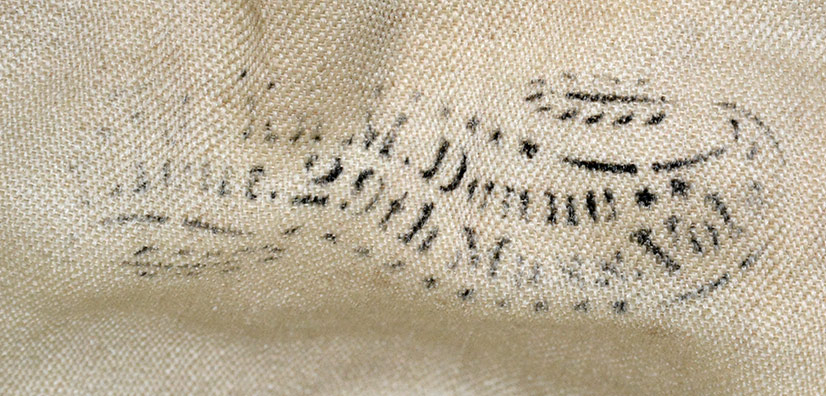
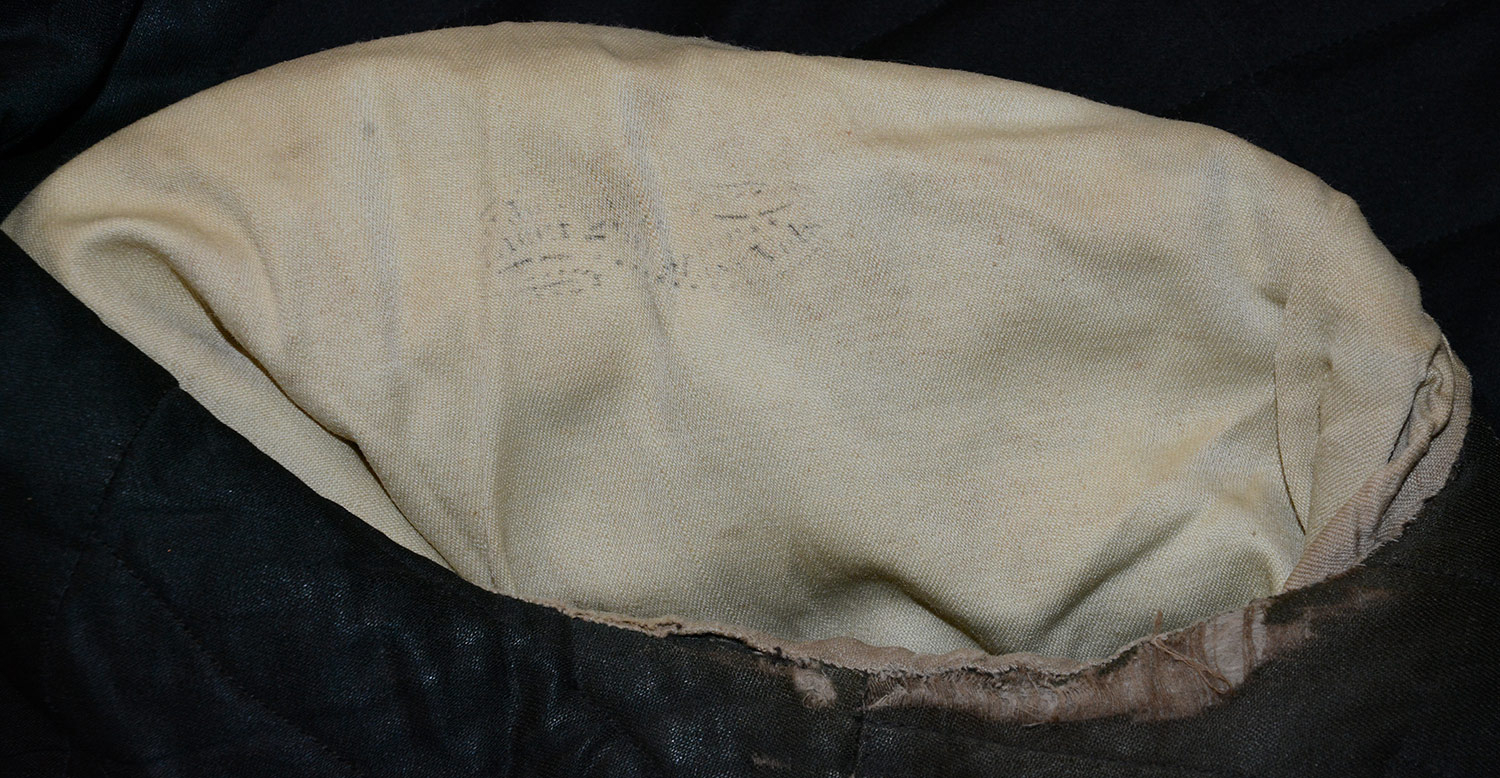
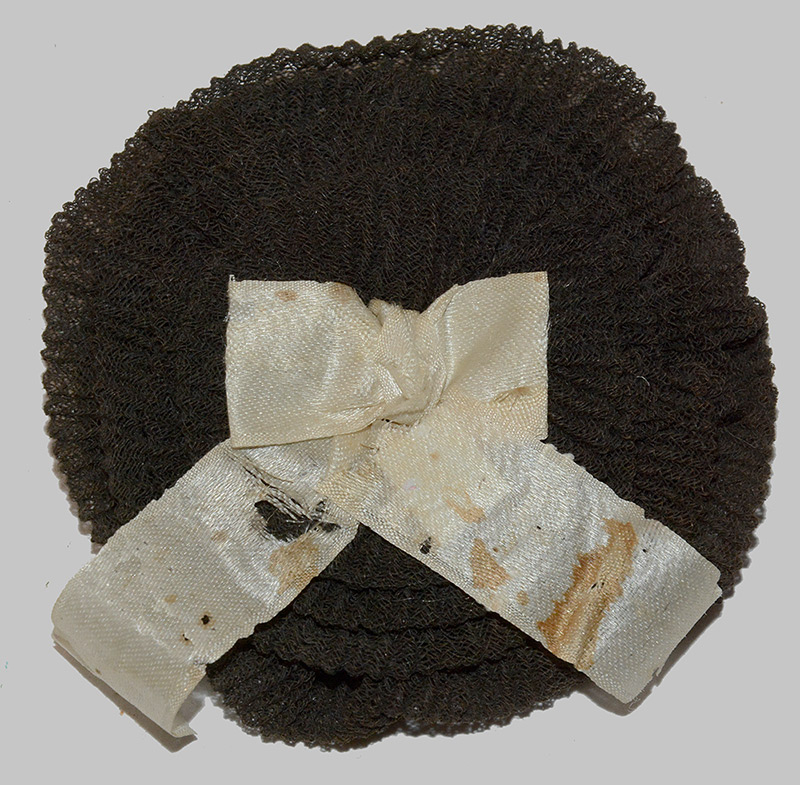
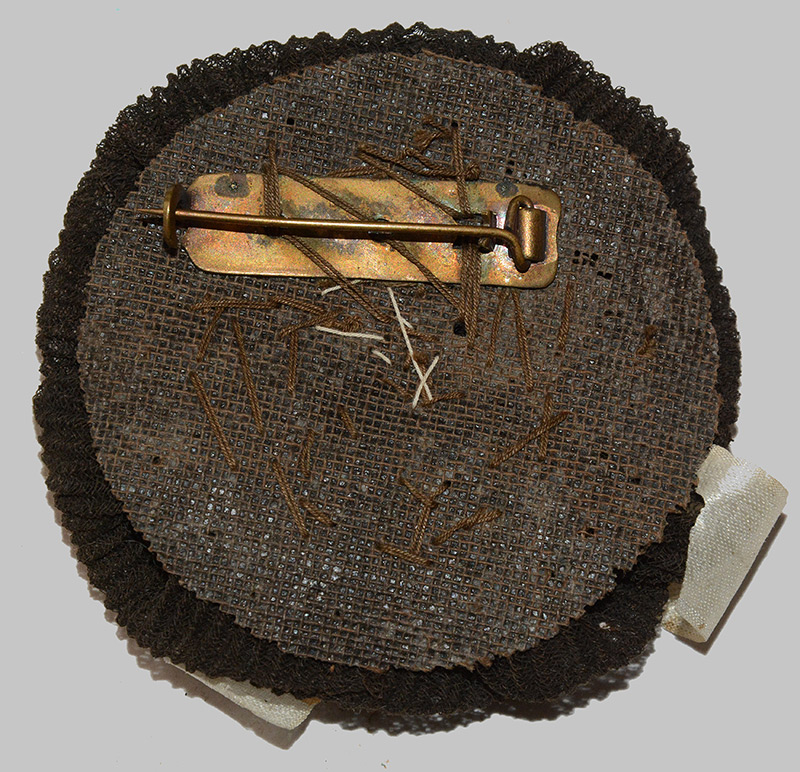
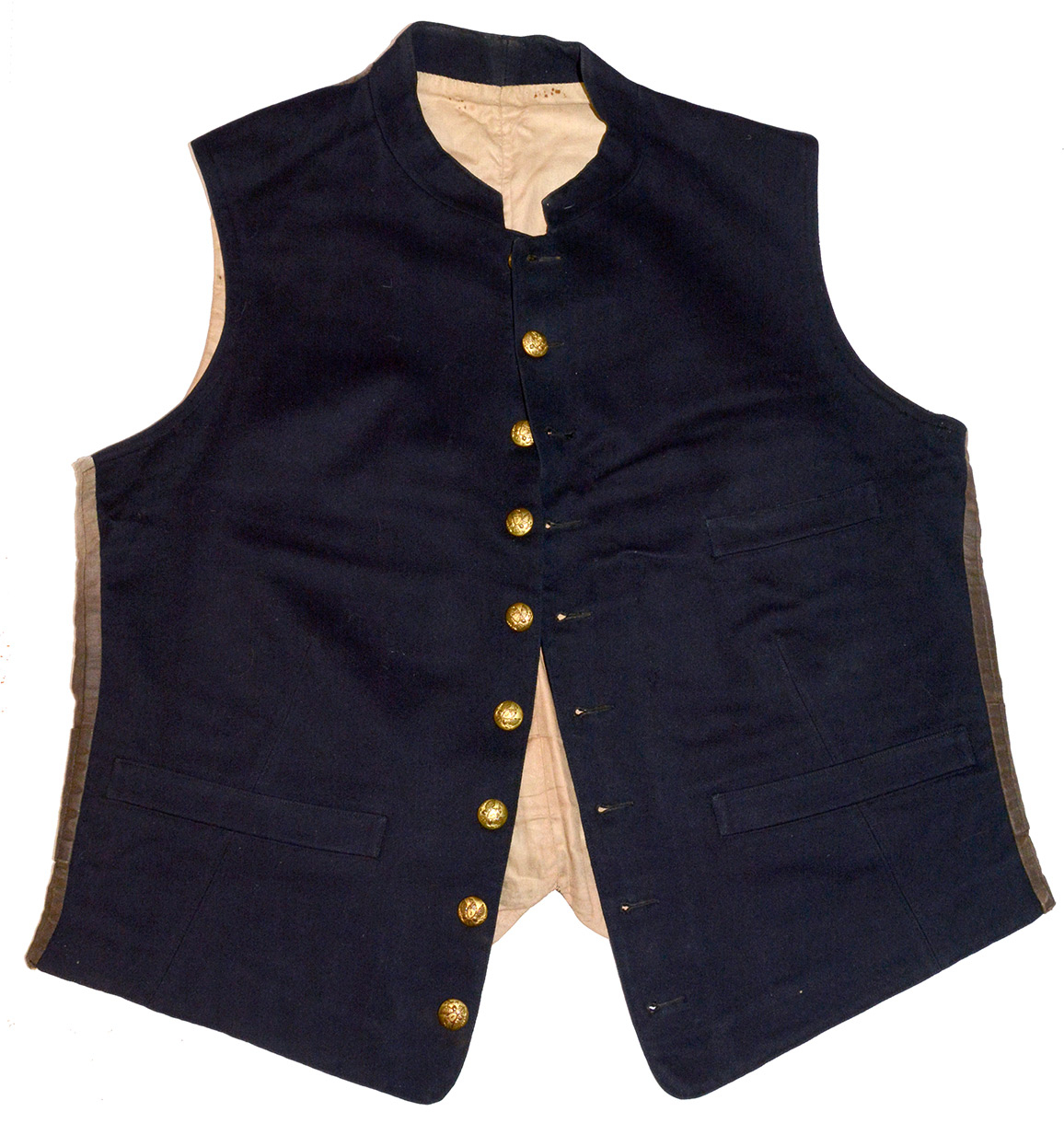
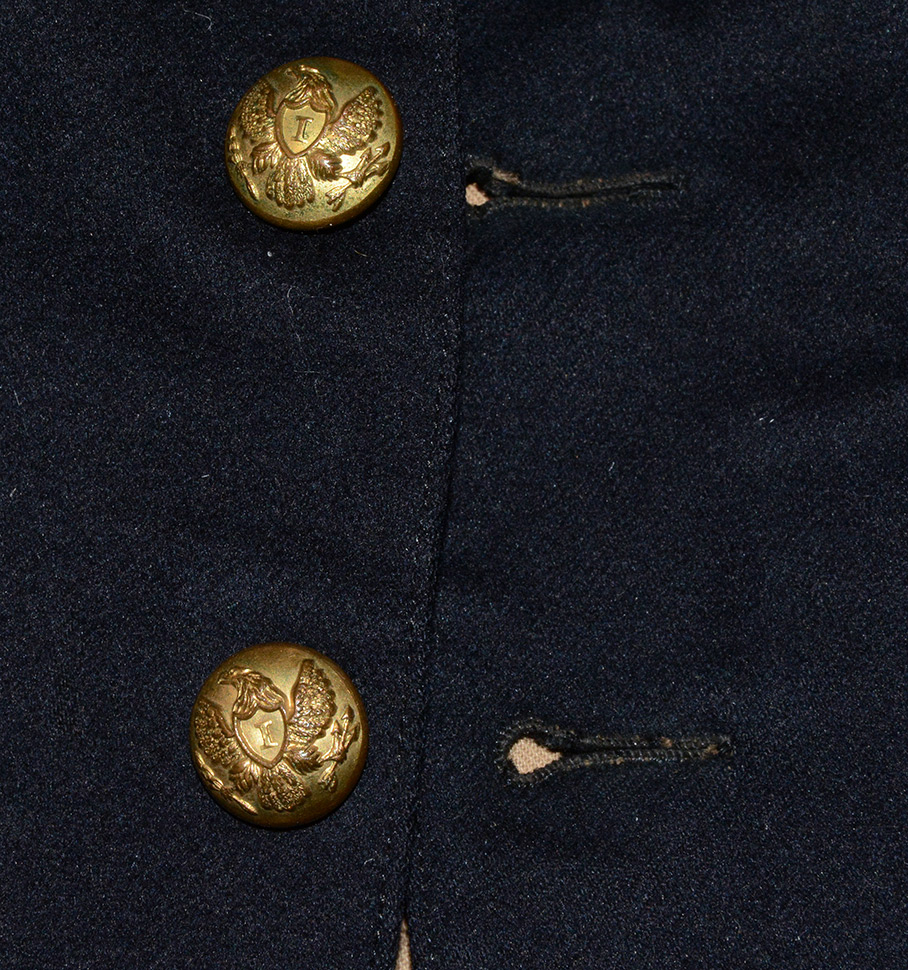
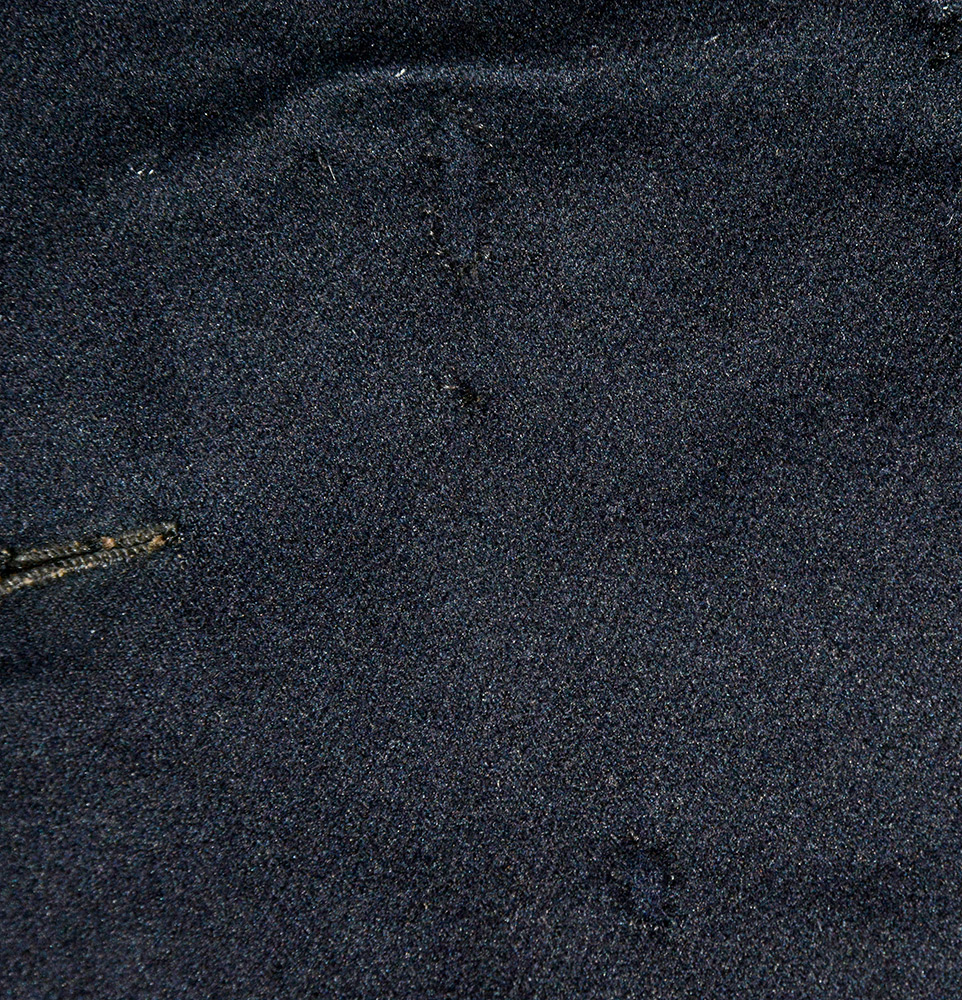
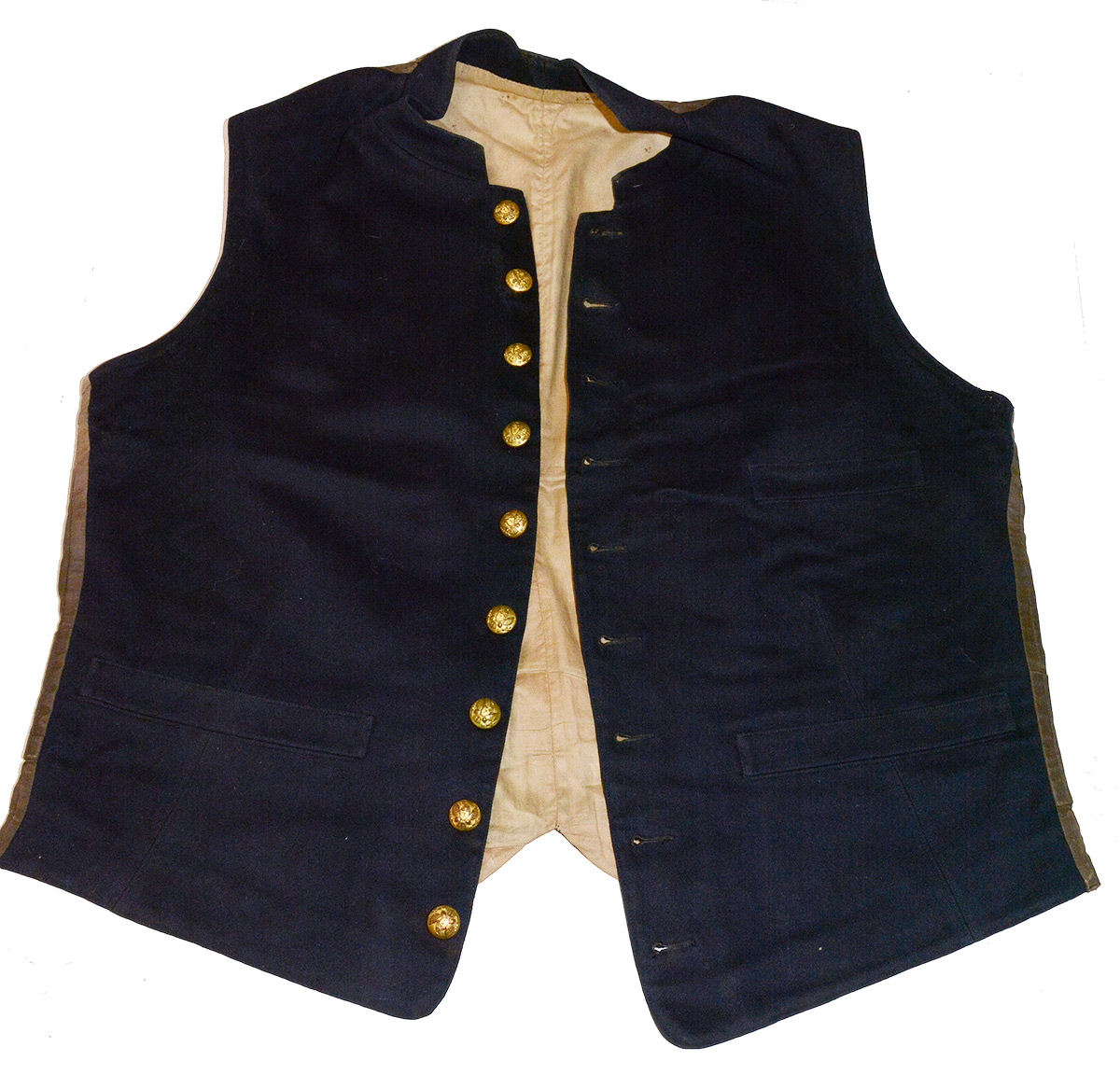
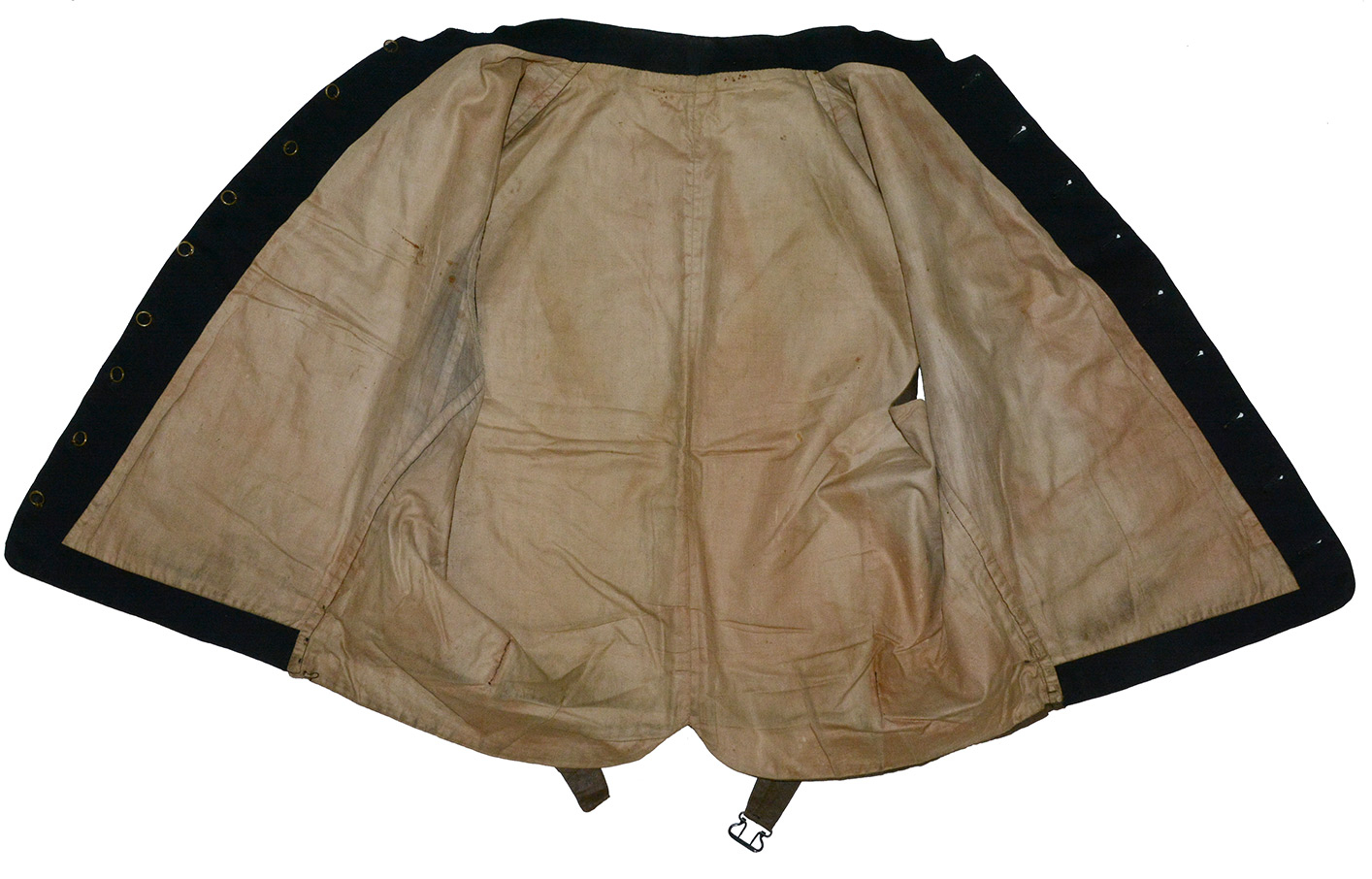
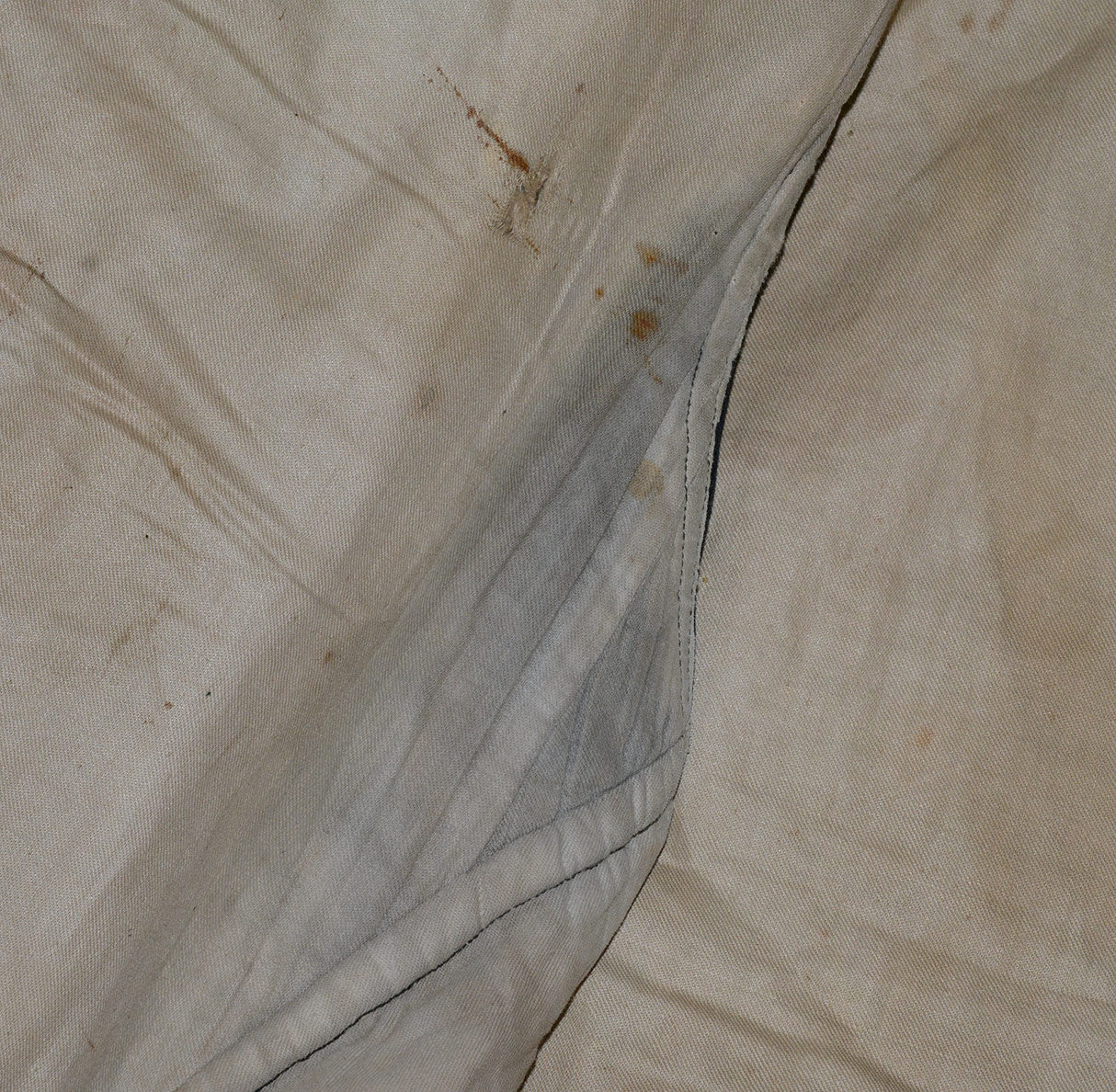

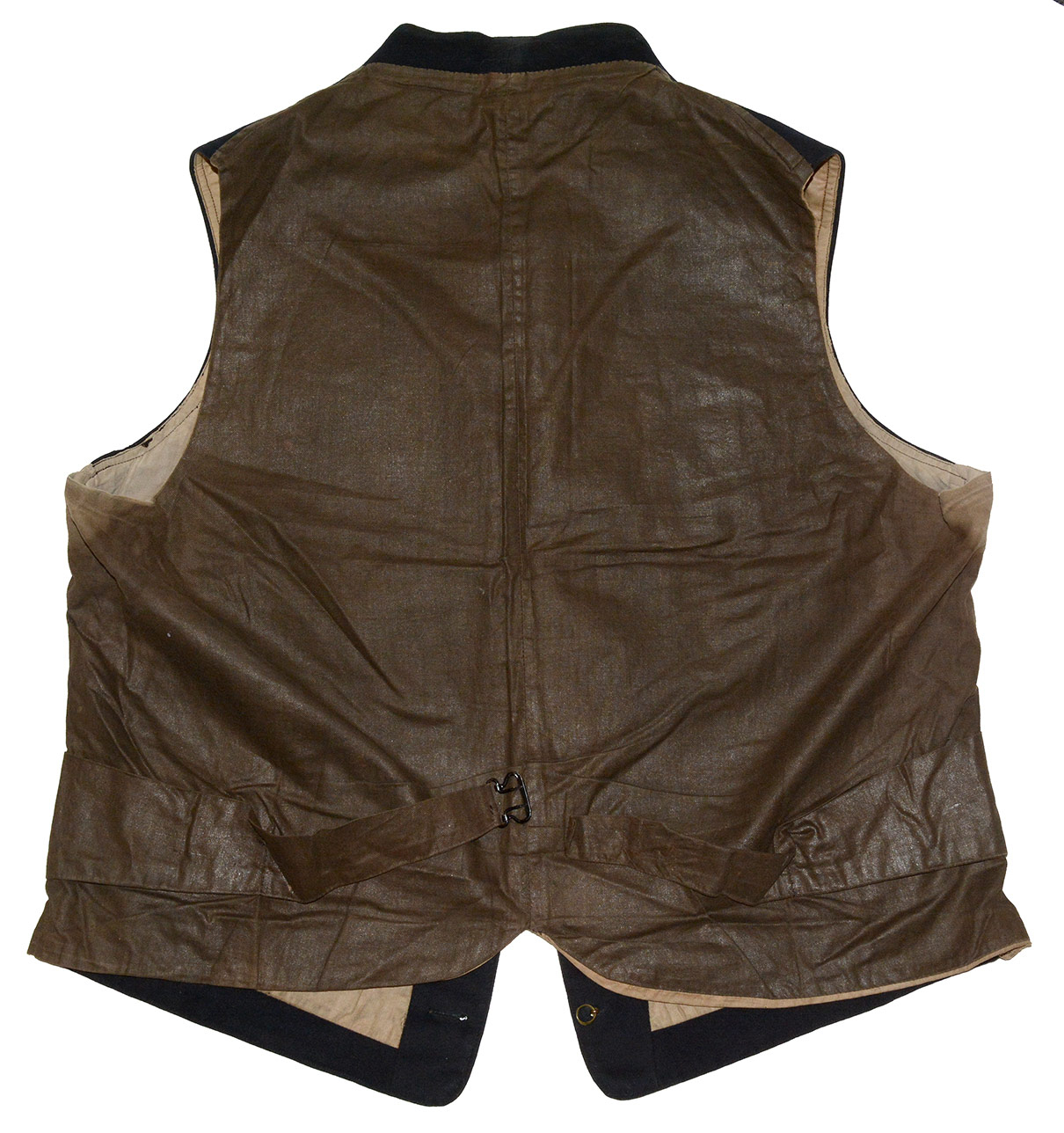
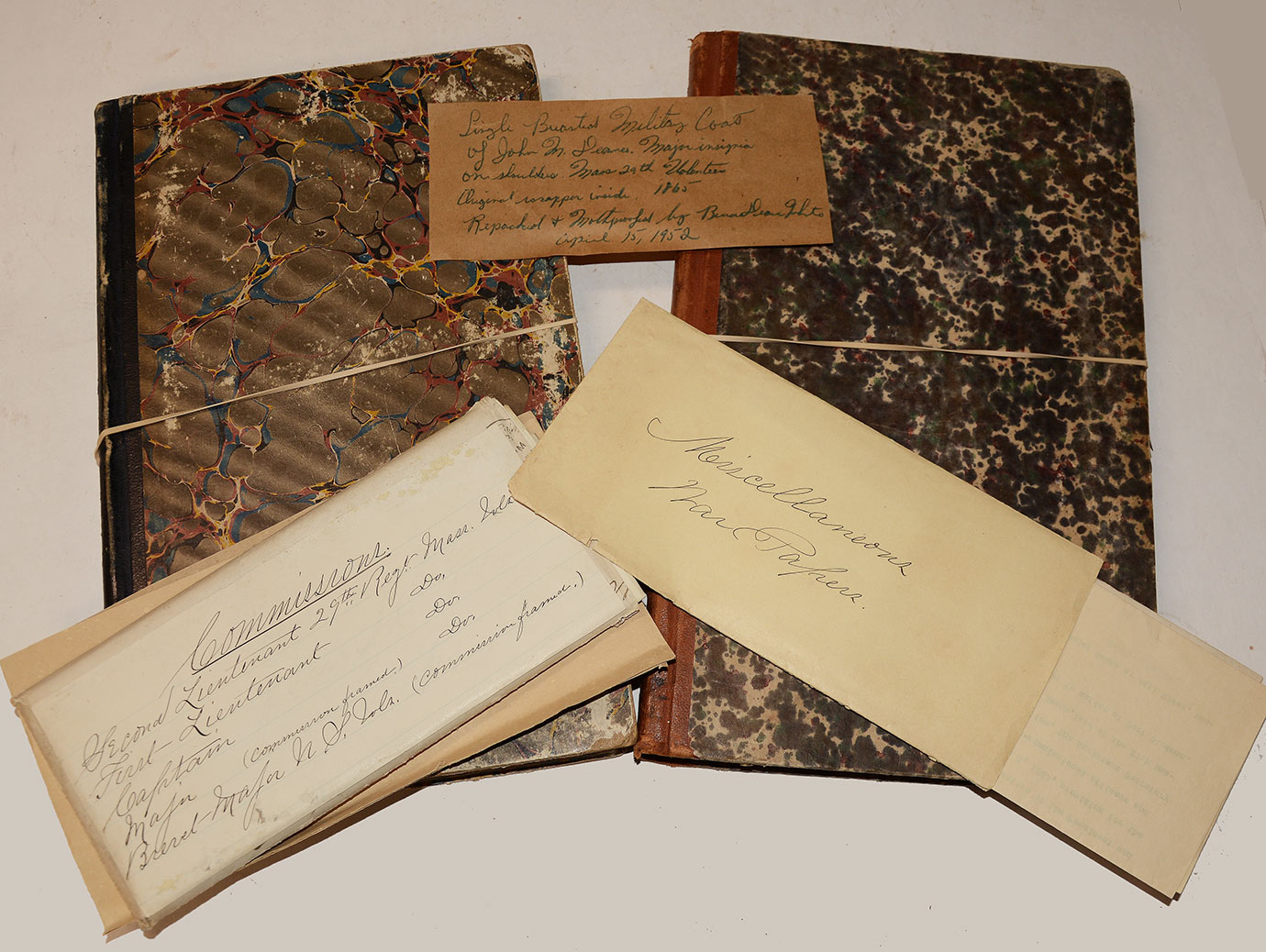
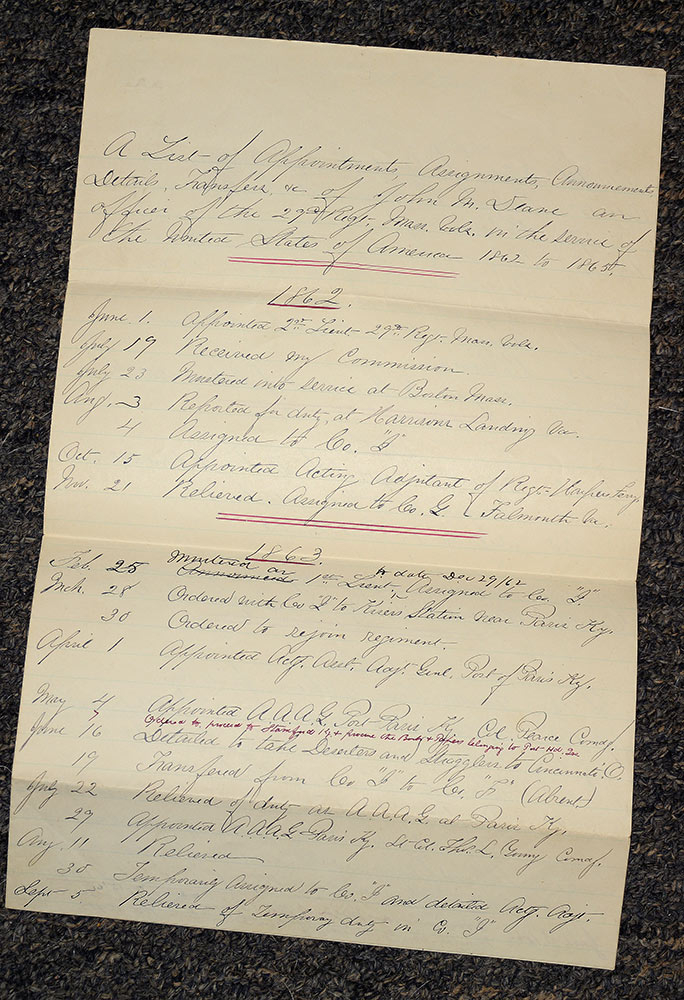
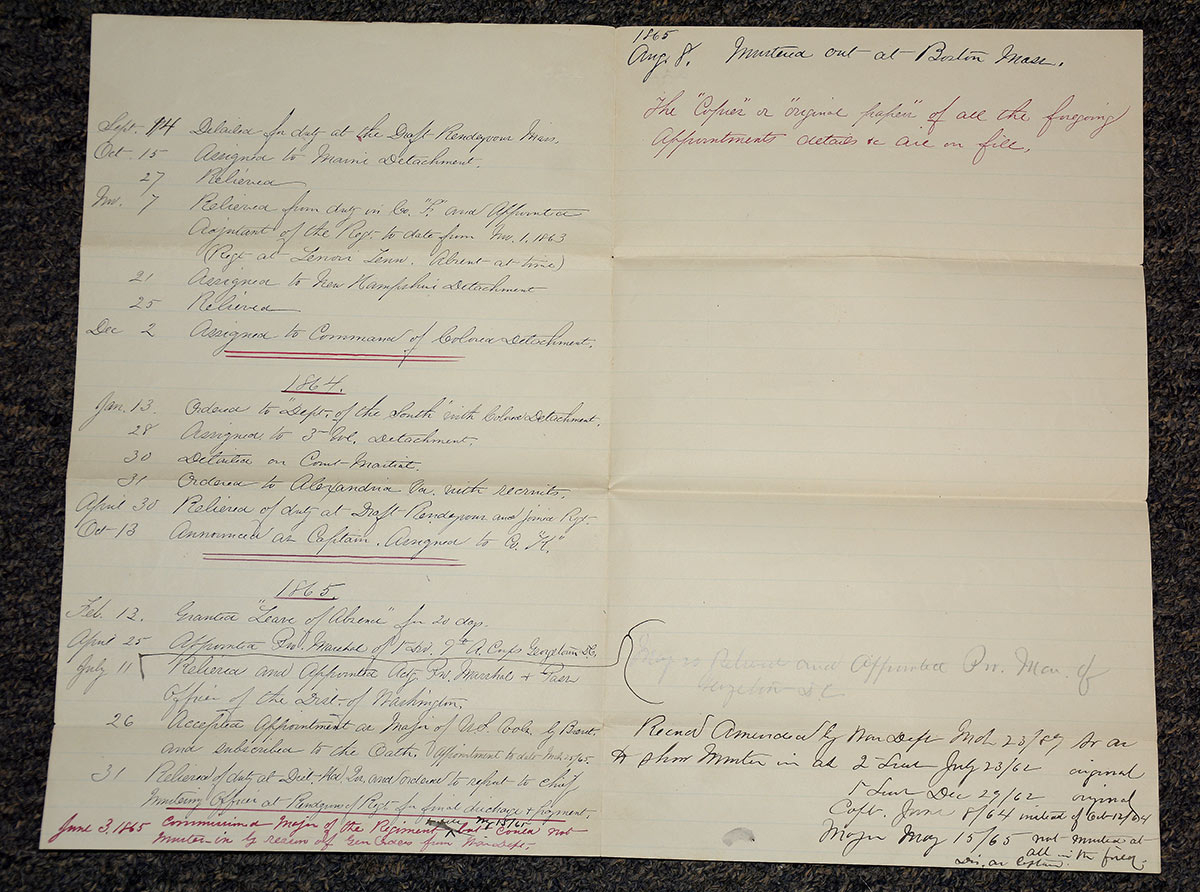
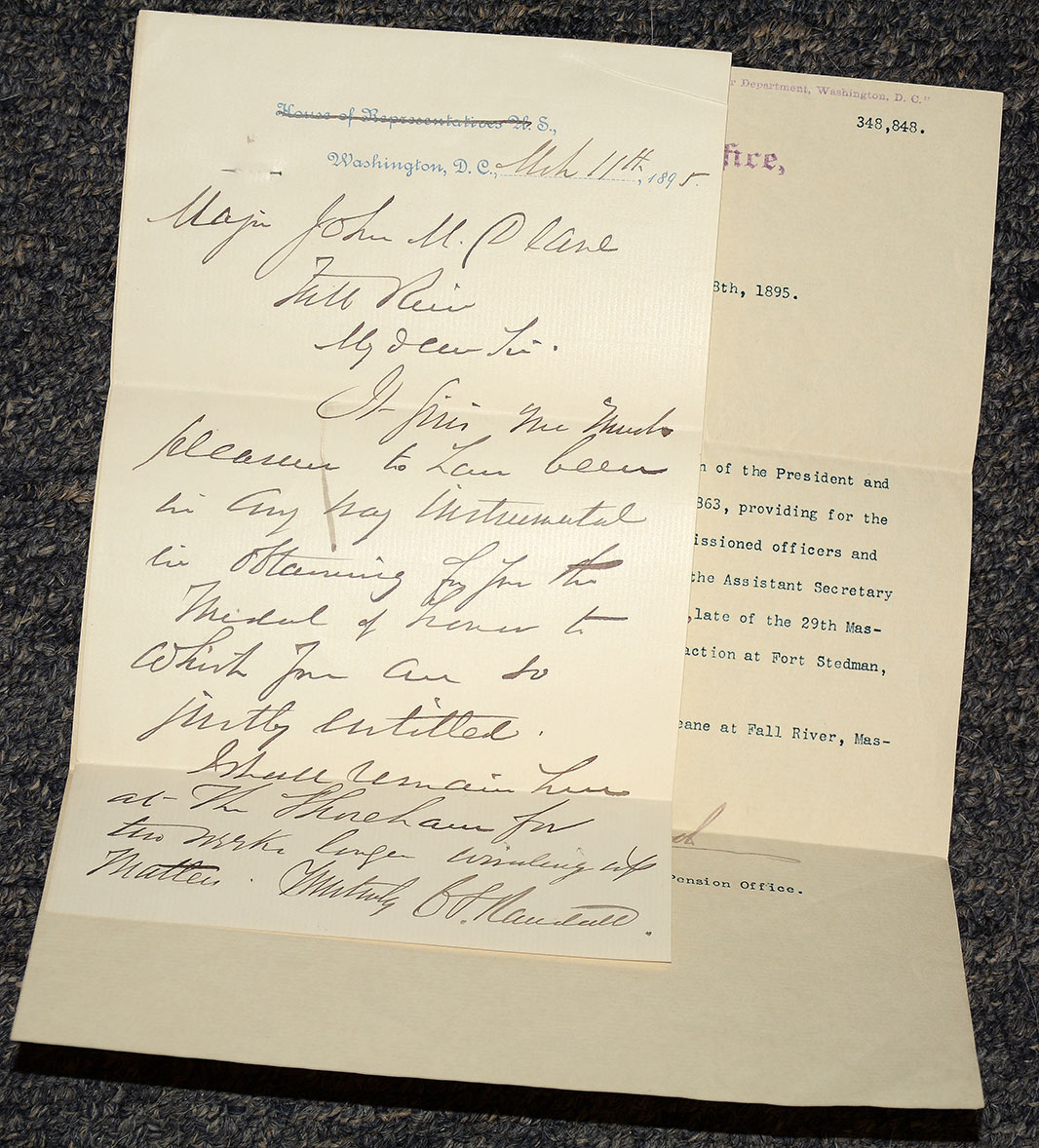
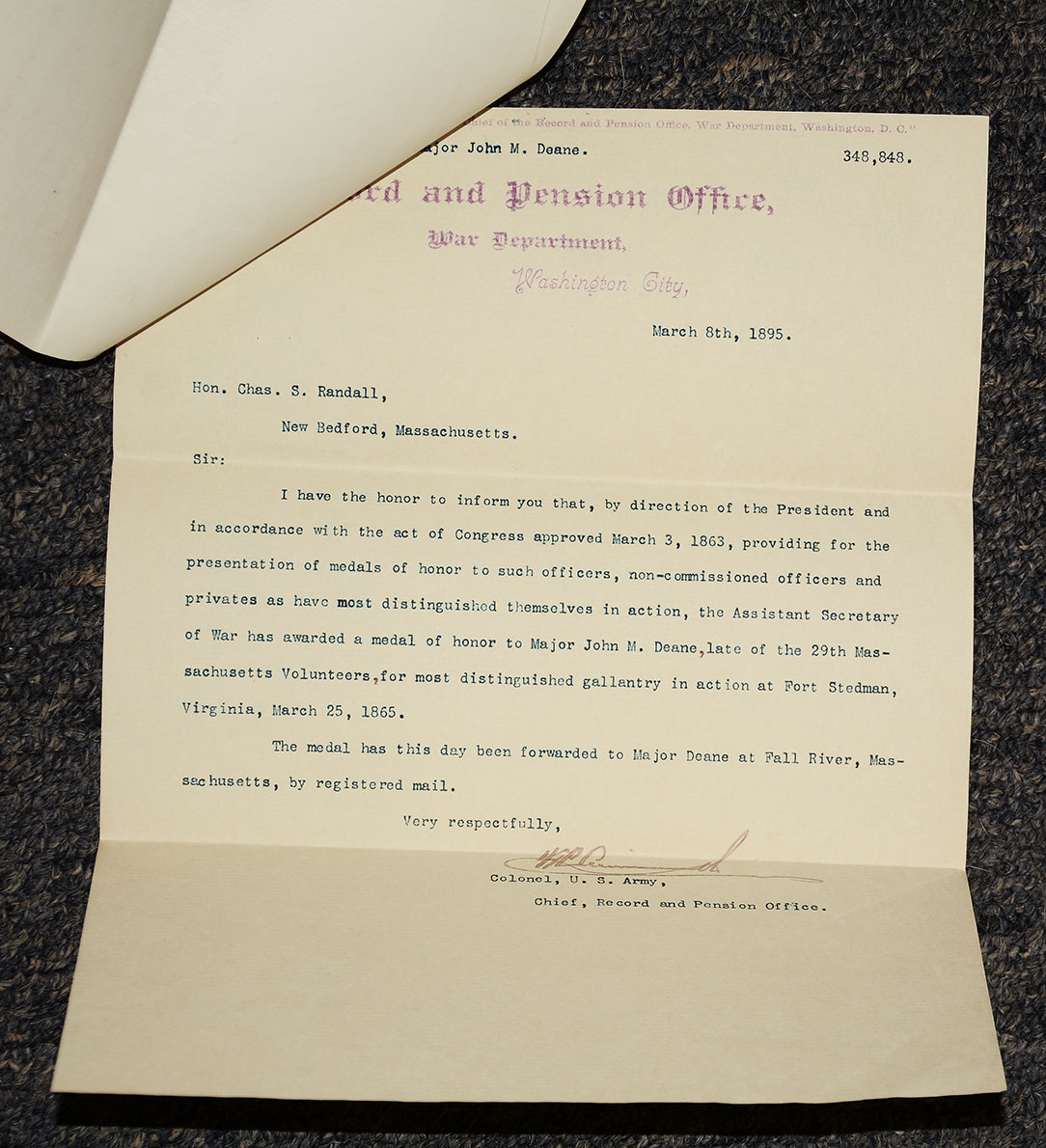
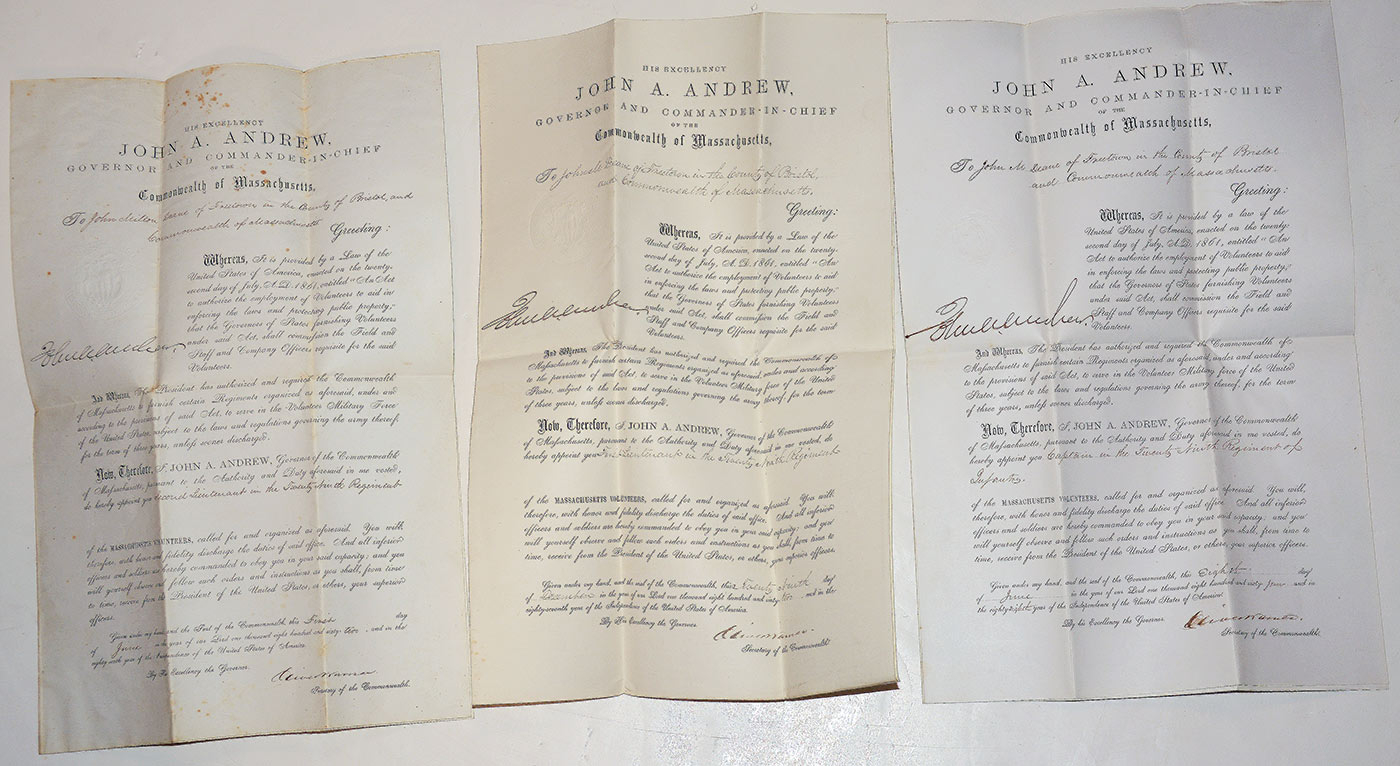
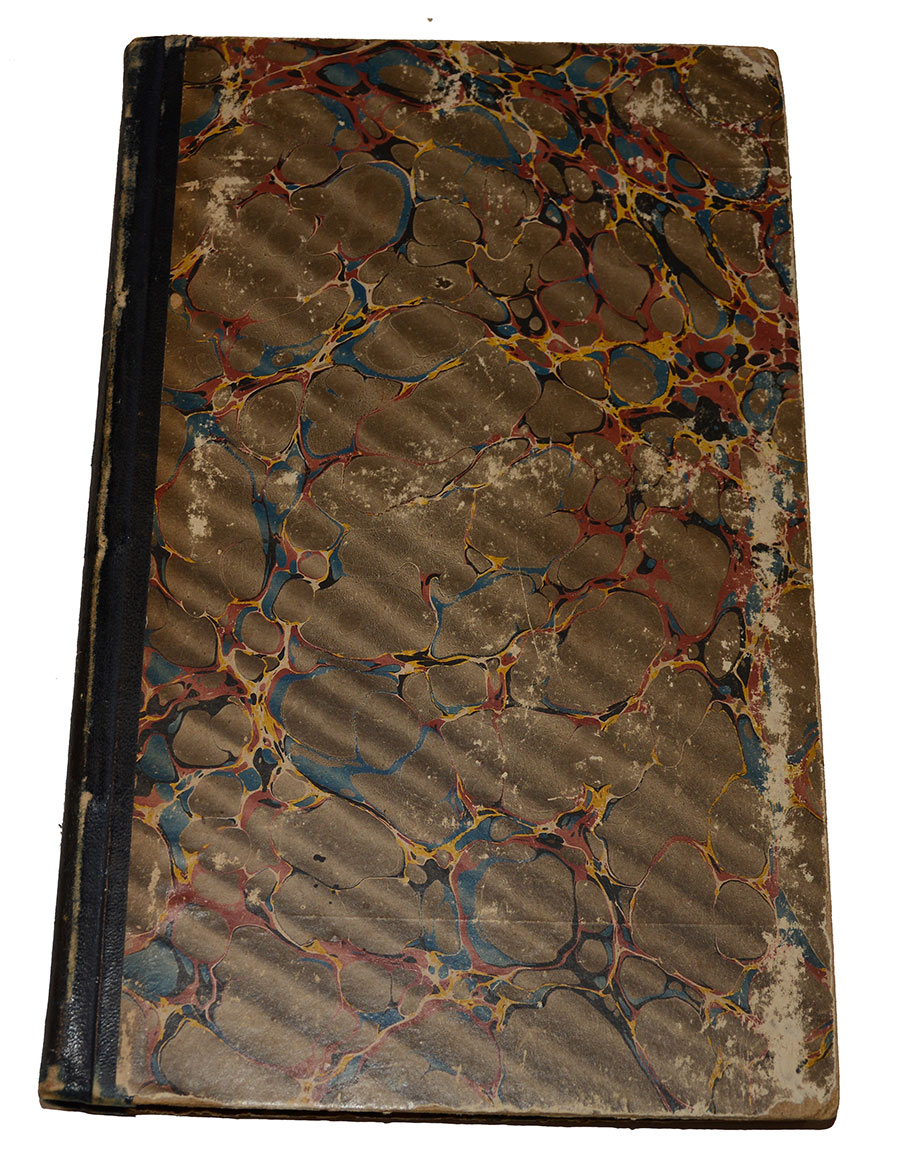
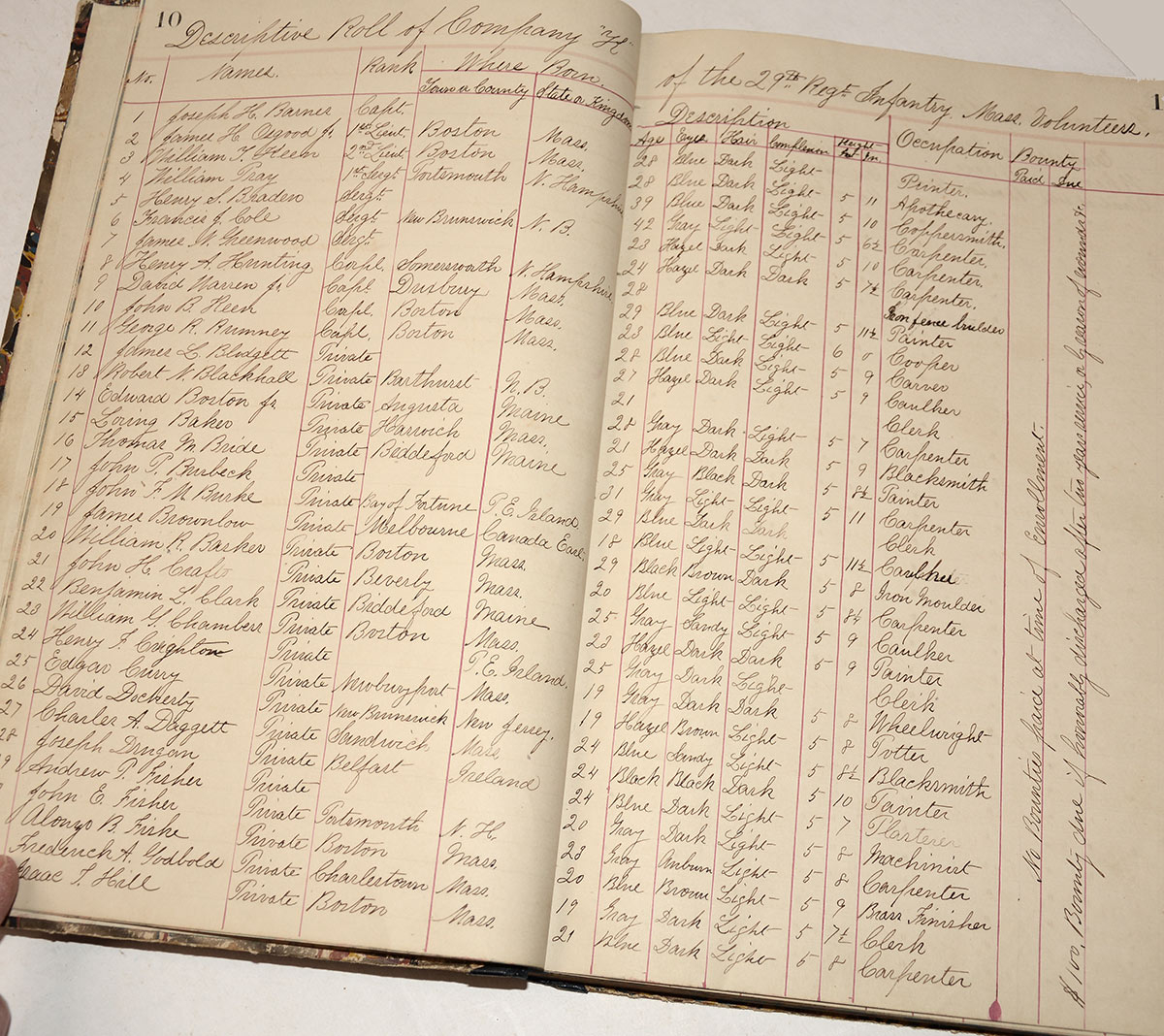
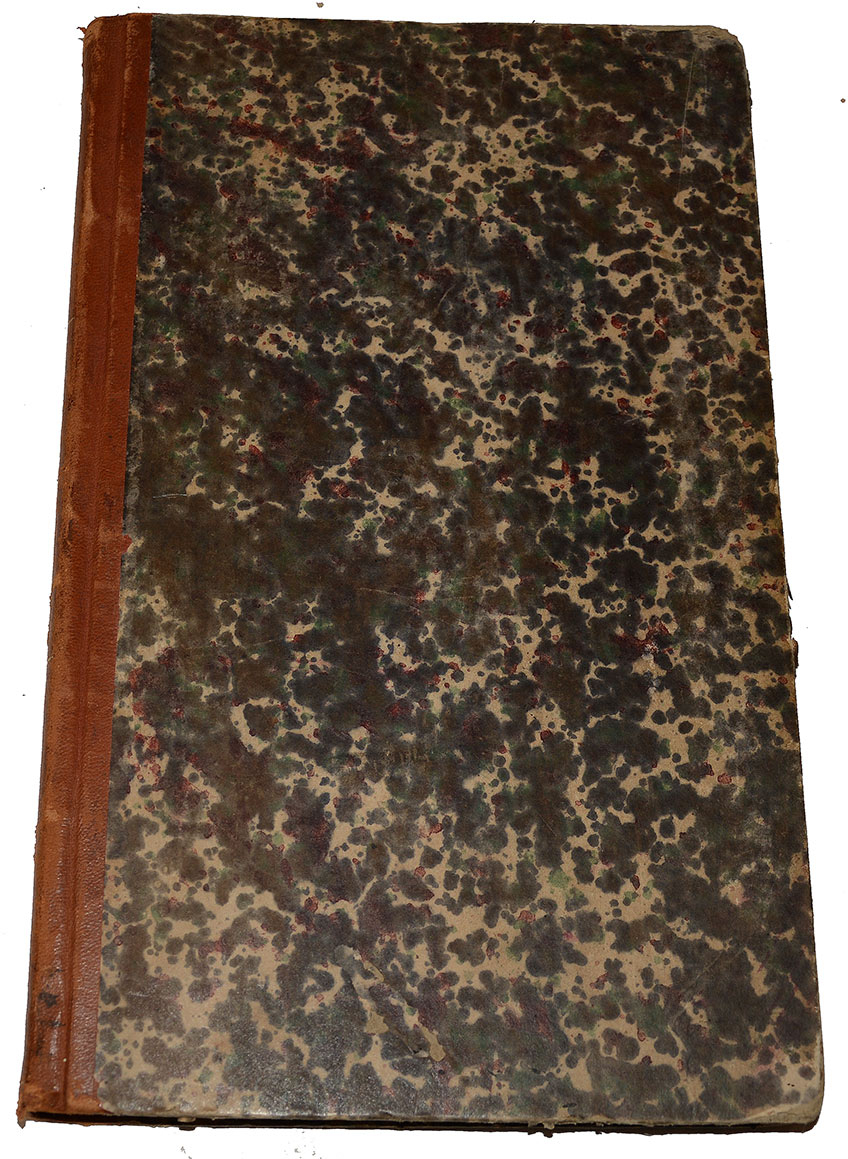
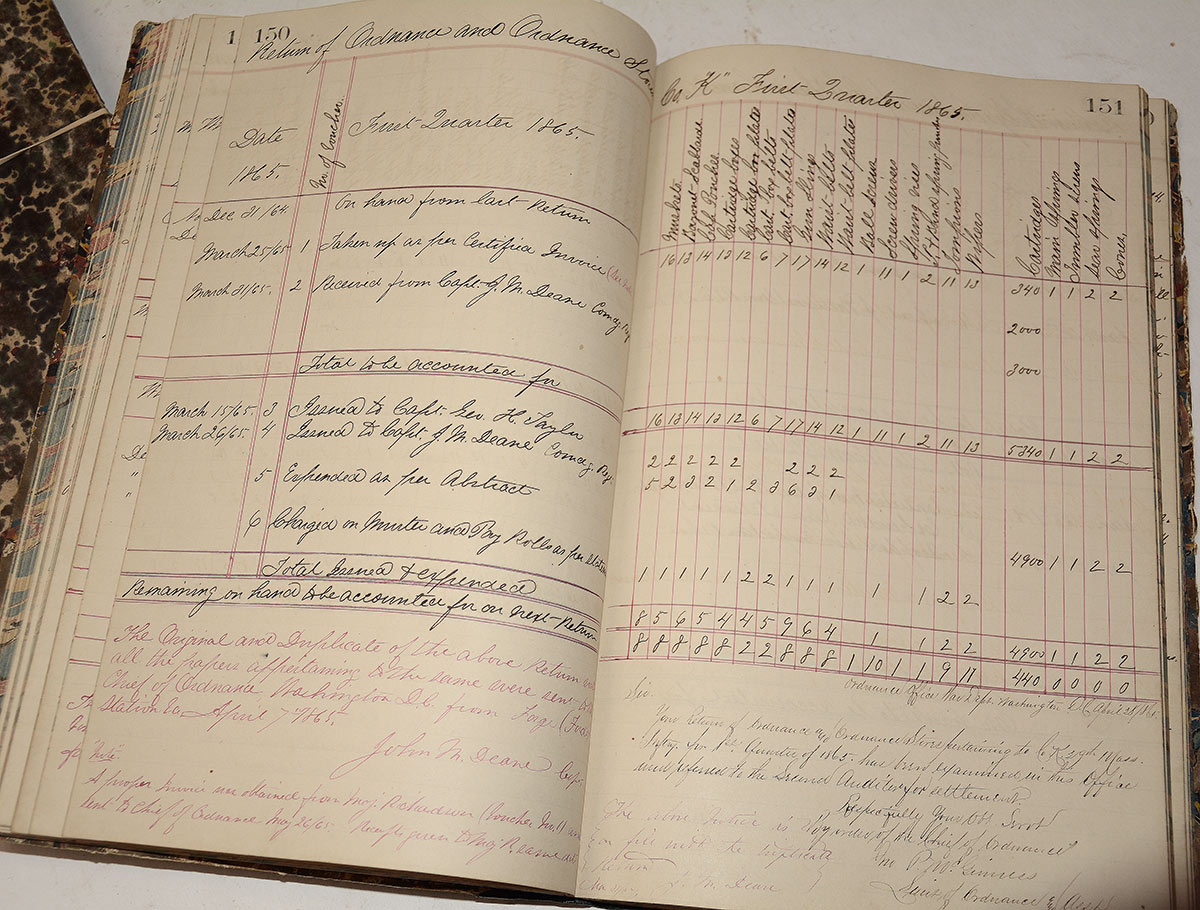
$19,725.00
Quantity Available: 1
Item Code: 1164-14
These items come from the extensive archive of material preserved and labeled by John M. Deane, an officer in the 3rd Mass. Volunteer Militia in 1861 and the 29th Mass. Volunteer Infantry from 1862 to 1865. The entire group was passed to his descendants and equally well cared for. The provenance is air-tight and many of the pieces retained individual notes in Deane’s own hand.
This group includes three uniform items. 1) Deane’s black line-officer’s frock coat that preserves on its skirts original black-crepe covered buttons, observing army directives for an official mourning period for President Lincoln in 1865. Preserved with the group is a pencil note in Deane’s hand likely referring to this coat and describing it as, “Single breasted military coat of Capt. John M. Deane 29th Mass. Vet. Vol. Infantry. Discharged from the service at Boston Mass Aug 8/65.” 2) A small black mourning cockade with a pin back those fits with army orders for the official mourning period. 3) Deane’s blue officer’s vest, of typical wartime construction.
With these is a substantial group of paperwork that includes Deane’s three Massachusetts commissions for appointments as Second Lieutenant, First Lieutenant, and Captain in the 29th Massachusetts, as well as two ledgers; one filled out with records from the 1864-1865 period of his service with the 29th Mass, including descriptive rolls, ordnance and equipment records, special and general orders, etc.; and, a second, containing records from his time, still in the 29th Mass., while serving as division provost marshal and provost marshal of Georgetown, DC, from April to July 1865.
Lastly, we include Deane’s own handwritten three-page “List of Appointments, Assignments, Announcements, Details, Transfers of John M. Deane an officer in the 29th Regt. Mass. Vols. in the service of the United States of America 1862 to 1865,” and a March 1895 note to Deane from Congressman Charles S. Randall accompanying a typewritten letter from the Record and Pension Office of the War Department, notifying him that Deane has been awarded the Medal of Honor for his actions at Fort Stedman and that the medal has been forwarded to Deane.
UNIFORM ITEMS
This regulation infantry line officer’s coat was made of black material and had its buttons draped in black crepe. The coat is standard configuration for a line officer: single breasted, fastened by nine buttons on the front, all Infantry-I patterns marked by Macullar, Williams and Parker of Boston, dating 1861-1865. The cuffs are functional and carry three small Infantry-I buttons. The interior has the standard quilted body lining, skirt lining, and white sleeve linings, all in excellent condition. The seams are tight, we see no moth damage, only a little sweat staining at the armpits. The fabric definitely has a black tone rather than dark blue. The buttons on the rear waist and skirts are still covered in black crepe. The cuff and lapel buttons were likely covered also, but were subject to more wear and handling over the years. Deane was promoted to Major with rank as of May 15, 1865, but did not actually receive the appointment and formally accept it until July 26, giving a cut-off date for the coat, which does not have its straps with it, but is a single breasted line officer’s coat, placing it well within the commencement of the mourning period for Lincoln.
Deane also preserved a black mourning cockade with a pin back. This consists of four overlapping circles of black crepe with a small white silk tie in the center, a combination seen in other Lincoln mourning badges and could have been worn both on the left arm or left breast. Both elements are sewn to a dark web backing, which in turn is fitted with T-bar pin on bar, sewn to the reverse. Wear of a coat decorated for mourning of President Lincoln, along with the cockade, is not only appropriate for Deane, who was dedicated to the cause and a “first responder” in 1861, but also in keeping with general orders for the army:
GENERAL ORDERS, NO. 66.
WAR DEPARTMENT
ADJUTANT-GENERAL'S OFFICE
The following order of the Secretary of War announces to the armies of the United States the untimely and lamentable death of the illustrious Abraham Lincoln, late President of the United States:
WAR DEPARTMENT,
Washington City, April 16, 1865.
The distressing duty has devolved upon the Secretary of War to announce to the armies of the United States that at twenty-two minutes after 7 o'clock on the morning of Saturday the 15th day of April, 1865, Abraham Lincoln, President of the United States, died of a mortal wound inflicted upon him by an assassin.
The armies of the United States will share with their fellow-citizens the feelings of grief and horror inspired by this most atrocious murder of their great and beloved President and Commander in Chief, and with profound sorrow will mourn his death as a national calamity.
The headquarters of every department, post, station, fort, and arsenal will be draped in mourning for thirty days, and appropriate funeral honors will be paid by every army, and in every department, and at every military post, and at the Military Academy at West Point, to the memory of the late illustrious Chief Magistrate of the nation and Commander in Chief of its armies.
Lieutenant-General Grant will give the necessary instructions for carrying this order into effect.
EDWIN M. STANTON,
Secretary of War .
On the day after the receipt of this order at the headquarters of each military division, department, army, post, station, fort, and arsenal and at the Military Academy at West Point the troops and cadets will be paraded at 10 o'clock a. m. and the order read to them, after which all labors and operations for the day will cease and be suspended as far as practicable in a state of war.
The national flag will be displayed at half-staff.
At dawn of day thirteen guns will be fired, and afterwards at intervals of thirty minutes between the rising and setting sun a single gun, and at the close of the day a national salute of thirty-six guns.
The officers of the armies of the United States will wear the badge of mourning on the left arm and on their swords and the colors of their commands and regiments will be put in mourning for the period of six months.
By command of Lieutenant-General Grant:
W. A. NICHOLS, Assistant Adjutant-General.
We include with the coat and cockade Deane’s blue infantry officer’s vest. Like all his other artifacts it was well cared for and is in excellent condition. Dark blue in color, it is made with a short stand-up collar, three pockets on the front, and fastened by nine small infantry-I buttons secured by rings enabling them to be removed for laundering. The vest is lined in white fabric. The adjusting belt and buckle are present on the rear. There only a little bit of wear along the top of the collar and three small moth bites on the right front that have matching color cloth behind them and are not obtrusive.
DOCUMENTS
Two envelopes labeled by Deane accompany his uniform items. One is titled, “Miscellaneous War Papers” and contains two items: 1) Deane’s “List of Appointments and Assignments.” This is a summary in his own hand of his service in the 29th Mass, broken down by year, with significant dates of various details noted, included an assignment in late 1863 to a draft rendezvous in Massachusetts where he notes assignment both to the “New Hampshire Detachment” and the “Colored Detachment” before returning to the regiment for promotion to Captain and renewed field service in April 1864. 2) An 1895 letter to him from his congressman and a notice of the Medal of Honor from the War Department.
The second envelope is titled “Commissions,” and contains three commissions to him, all signed by Governor Andrew of Massachusetts and stamped with the state seal. The Second Lieutenant commission has slight foxing on the reverse. His First Lieutenant commission has one slight tear on one edge. Otherwise they are very good, and preserved folded in an envelope labeled for them, with a note that his commissions as Major had been framed. These, too, would look great framed and are appropriate for the line officer’s coat.
RECORD BOOKS
These consist of two ledgers containing a huge amount of information about the inner workings of Deane’s company in 1864-65 and his duty as Provost Marshal from April through July 1865.
1) Transcripts of records kept while company commander and regimental adjutant, this includes company descriptive lists, ordnance and clothing returns, special orders and general orders issued at the regimental, brigade, and division level, etc., recorded on 220 densely, but very legibly written pages.
The book consists of 360 numbered pages, some blank, and 220 filled in in several distinct sections. Those filled in are done so in a very legible hand with occasional later notes by Deane. Pages 10-47 are descriptive rolls for Co. K of the 29th, including loads of personal details about the men in the company from dates of enlistment to physical description, place of enlistment, place of birth, occupation, bounties received, etc. etc. Pages 52 and 53 include a list of battles the company went through and those participated in by Deane personally and one of his lieutenants. This contains a note that he was unable to complete it, but it looks like he may have intended such a list for every man in the company. Pages 100-119 are detailed clothing accounts for several men in the company covering the last quarter of 1864 and first quarter of 1865. Pages 124 to 134 are ordnance and ordnance stores lists for some of the same men, indicating they were likely new recruits to the company.
Pages 136 to 169 are ordnance and camp, garrison and equipage returns for the company for the same period. Pages 200-277 and 300-353 are perhaps the most interesting, containing special orders and communications both within the regiment and coming down from brigade headquarters, etc. These start in January 1864 and run to June 1865, likely corresponding to Deane’s appointment as regimental adjutant. The first group grows spotty in March 1865, apparently as a result of the regiment’s fighting at Fort Stedman and the second batch then fills in many communications, including reports of the battle, congratulations from commanders and records of casualties. Official communication of Lee’s surrender and Lincoln’s assassination are included. These are recorded in chronological order, but the numerical sequence of the special orders, for instance, shows that not every one is being recorded. It is likely that Deane was recording simply those pertaining to the regiment.
This is veritable treasure trove for someone researching the unit or looking for the inside view of a Union army regiment. Notices of promotions of non-commissioned officers, reports of the state of fortifications along the regiment or division front, praise of the bravery of various men, notification in Dec. 1864 of a ceremony to award medals of honor, etc., etc.
2) This contains records kept by Deane while acting as 9th Corps 1st Division Provost Marshal from about April 25 to May 20 and Provost Marshal of Georgetown, D.C. from about May 20 to July 14, 1865. It contains transcripts of orders and letters received by the office, and arrest reports. It is divided into three sections, the first of which covers 132 pages of orders and correspondence from April 25 to about July 14, 1865. These cover directives for issuing passes, regulating sutlers and peddlars, requests for the arrest or release of certain parties, including a few officers, reports of burglary, stolen horses, and disorderly conduct, along with a few apologies from enlisted men promising better behavior. The second section, about 30 pages long, lists arrests from May into mid-July, most soldiers, grouped by day of arrest and signed off on by the officer of the day, with each man listed by rank, company, regiment, brigade, division, and corps, with the charge, under “remarks.” Most nabbed through mid-June lacked passes. After that being drunk seems to have been main reason. The last section, about 33 pages is titled, “Headquarters District of Washington Office Provost Marshal and Pass Officer Orders & Correspondence,” and runs from about July 11 to July 25. Toward the end it includes notices to Deane of his promotion to “Major of Volunteers by brevet for gallant and meritorious service in the attack on Fort Steadman,” his Oath of Office and acceptance, and Orlando Wilcox’s farewell address to the division.
ABOUT DEANE
A 29-year old teacher when the war broke out, Deane had been in the Massachusetts militia and was one of the “Massachusetts Minutemen of 1861,” joining the 3rd MVM in going to Washington on news of Fort Sumter. They served three months, evacuating and firing the Gosport Navy Yard and garrisoning Fortress Monroe. Deane mustered out 22 July 1861 and in June 1862 was commissioned 2nd Lieutenant in the 29th Massachusetts, making 1st Lt. 12/29/62; Adjutant 11/1/63; Captain 6/8/64, and Major 5/15/65 with a later brevet to Major of U.S. Vols to date 3/25/65. He was mustered out 8/8/1865 and in later years lived in Freetown, Mass., where he was a member of Richard Borden G.A.R. Post #46, and died 9/2/1914.
The 29th Mass. served in the Irish Brigade in the Peninsula Campaign and at Antietam, fighting at the Sunken Road. Transferred to the 9th Corps, they served in Mississippi and Tennessee in 1863, returned east and were briefly in the 5th Corps before rejoining the 9th again for Grant’s overland and Petersburg campaigns. Seeing action at Bethesda Church, Cold Harbor, Petersburg, Weldon Railroad, and Fort Stedman, Lee’s last attempt to break the siege of Petersburg. Deane was awarded the Congressional Medal of Honor for helping to man an abandoned artillery piece under heavy fire and aiding in the repulse of the Confederate attack. The regiment lost 4 officers and 53 enlisted men killed or mortally wounded during their service. Deane penned several of the regiment’s official reports for 1864 and 1865, and his letters have been published. He lists twenty battles in which he participated in one of the ledger books in this lot.
This is a great set with tight provenance, identified to an officer with a strong fighting record, and a recipient of the Medal of Honor. It would also be a centerpiece in a collection of Lincoln mourning memorabilia. With Deane’s early response to the crisis of 1861 and his wartime service to the very end, it was certainly a heartfelt expression on his part as well as following War Department directives. [sr] [ph:L]
~~~~~~~~~~~~~~~~~~~~~~~~~~~~~~~~~~~
THIS ITEM, AS WITH ALL OTHER ITEMS AVAILABLE ON OUR WEB SITE,
MAY BE PURCHASED THROUGH OUR LAYAWAY PROGRAM.
CLICK HERE FOR OUR POLICIES AND TERMS.
THANK YOU!
Inquire About MASSACHUSETTS MEDAL OF HONOR RECIPIENT’S OFFICER’S UNIFORM COAT DRESSED OUT FOR MOURNING LINCOLN, WITH HIS MOURNING COCKADE, VEST, COMMISSIONS, LEDGERS, AND NOTES
Most Popular
Historical Firearms Stolen From The National Civil War Museum In Harrisburg, Pa »
Theft From Gravesite Of Gen. John Reynolds »
Selection Of Unframed Prints By Don Troiani »
Fine Condition Brass Infantry Bugle Insignia »
featured item
VERY RARE VIRGINIA OFFICER’S HAT INSIGNIA
This is a really great, and really rare piece of insignia, showing its age in the natural oxidation of the black velvet ground to soft brown and the embroidered bullion wreath and “VA” to a muted silver-gray, but with no moth holes, just a few… (1299-29). Learn More »
site search
Upcoming Events
The shop is currently closed so that we may conduct our annual inventory. We are available by phone… Learn More »


